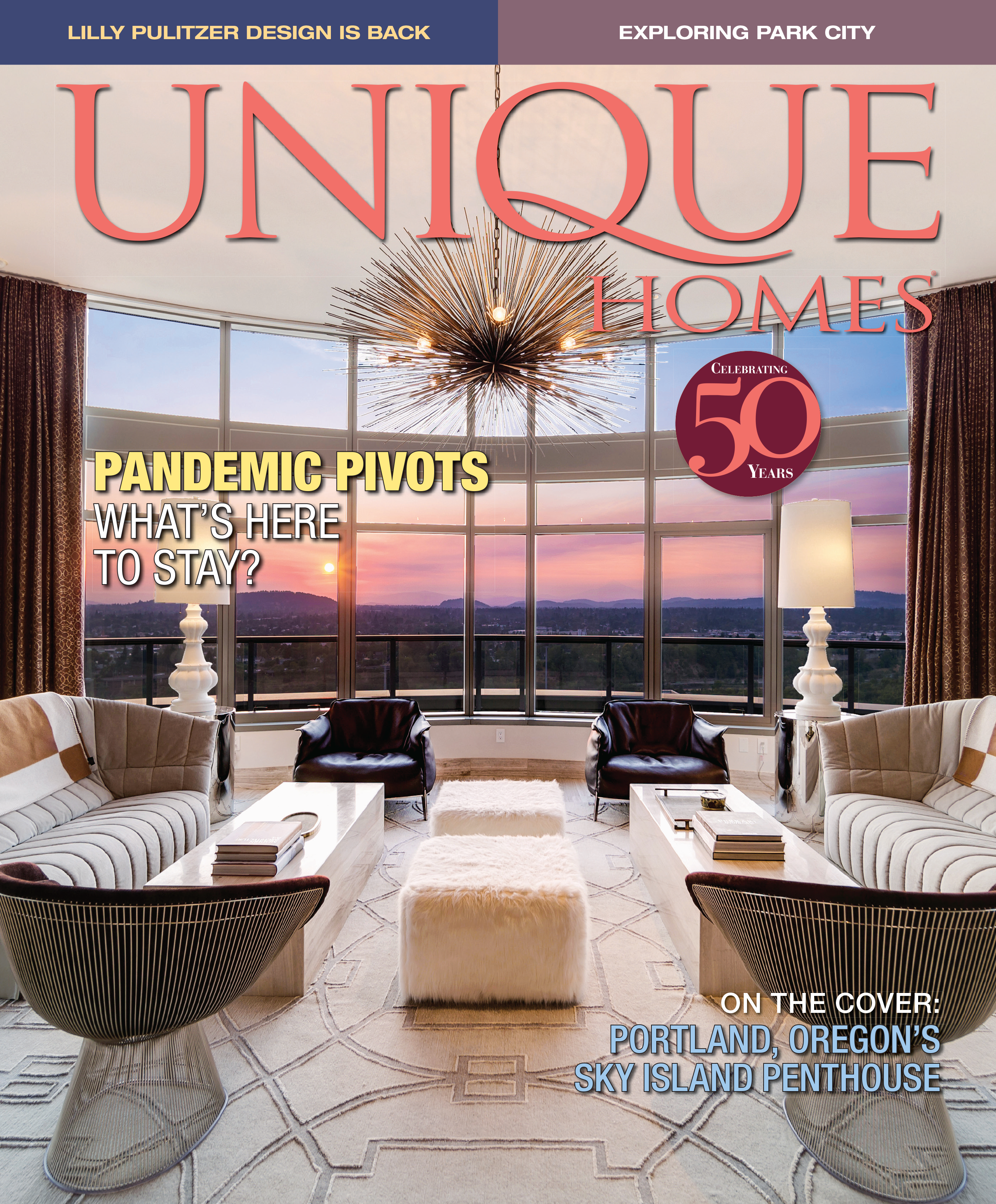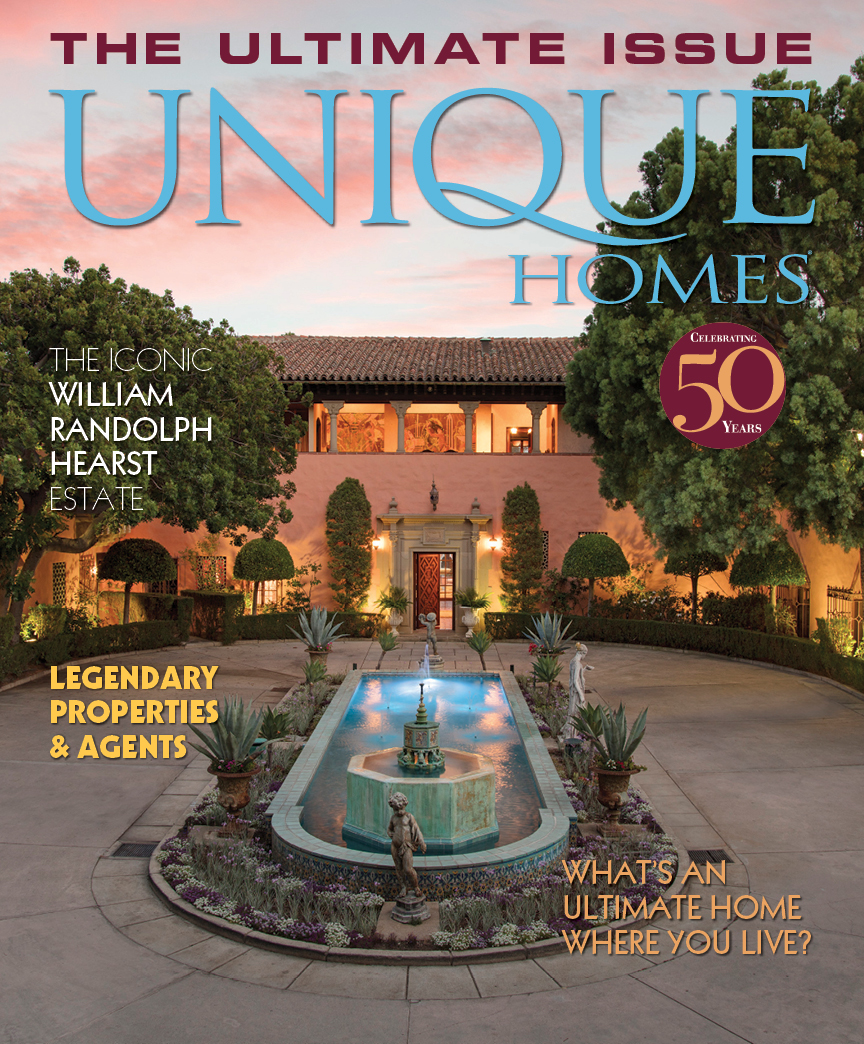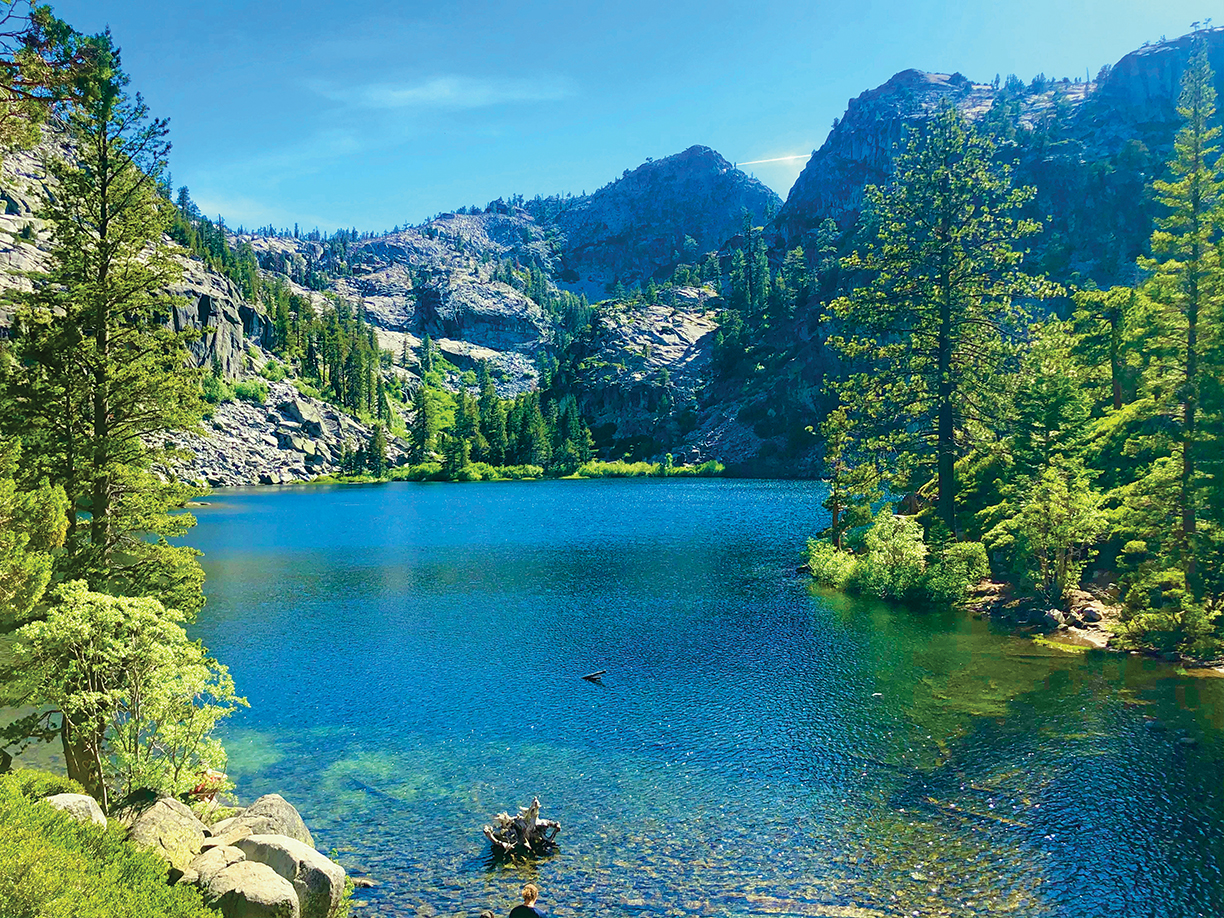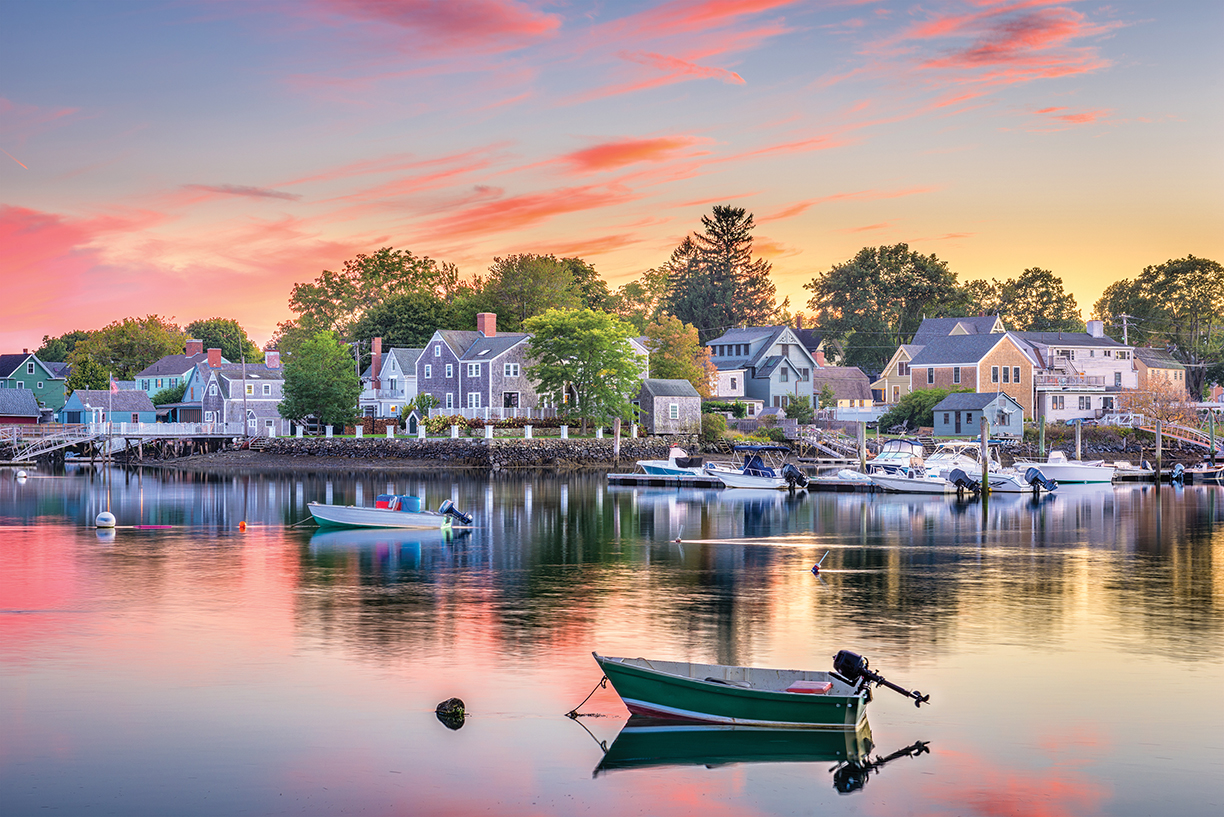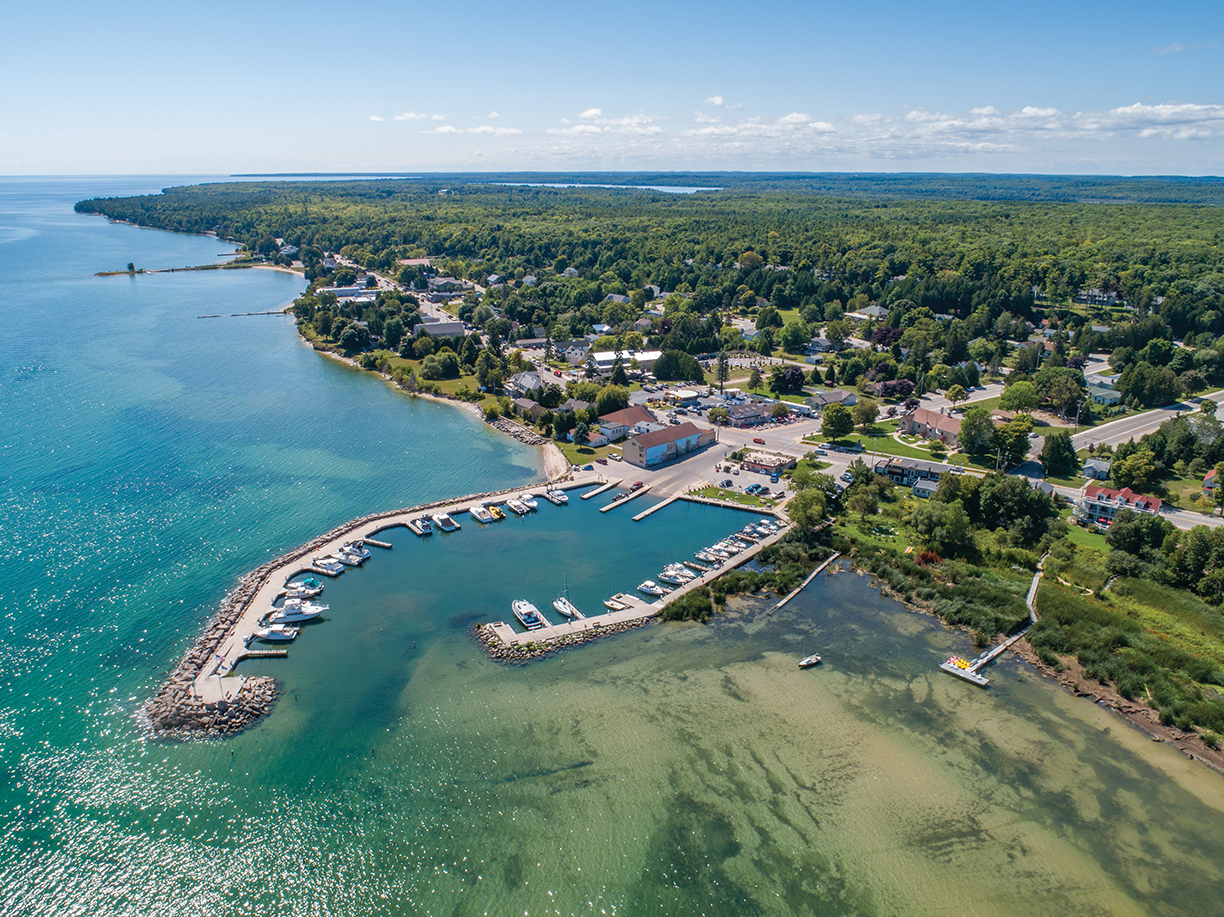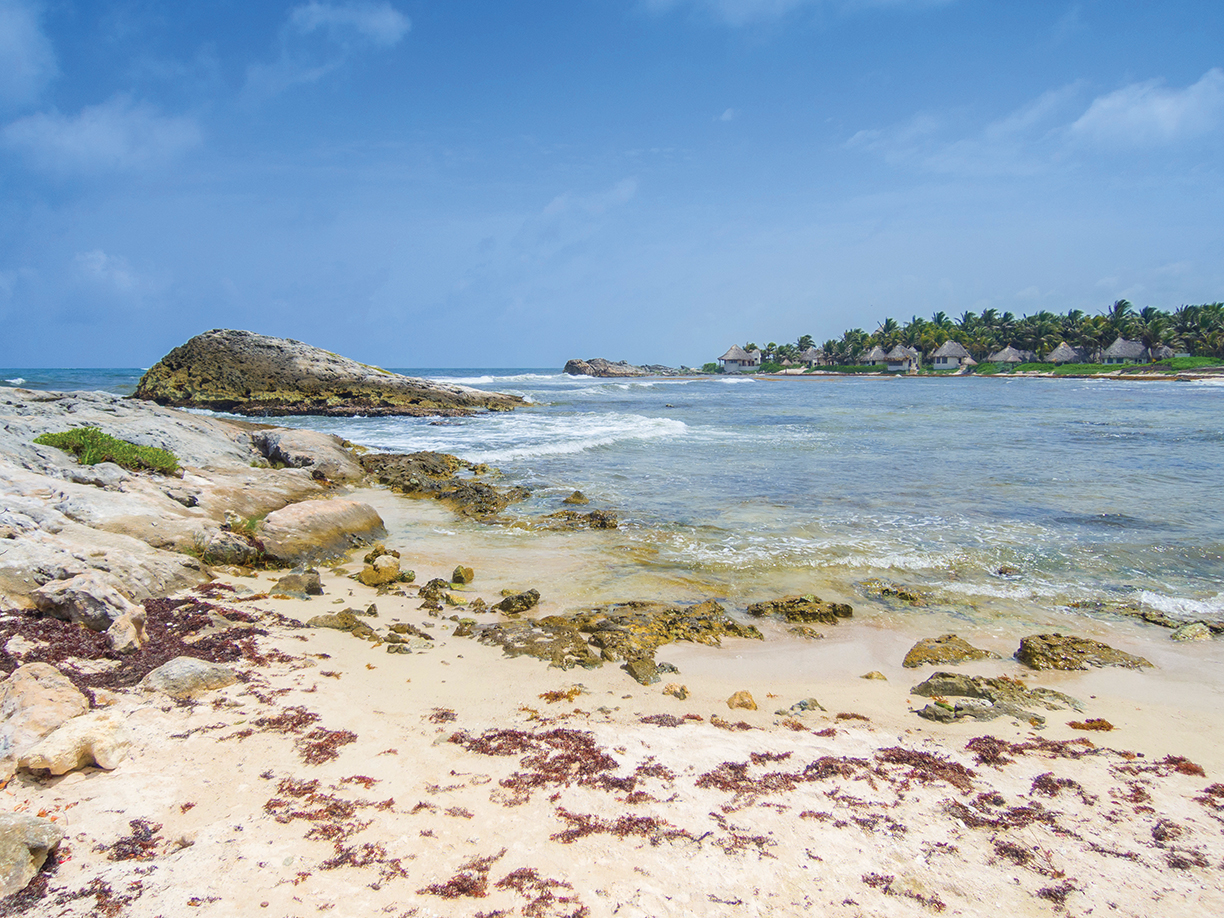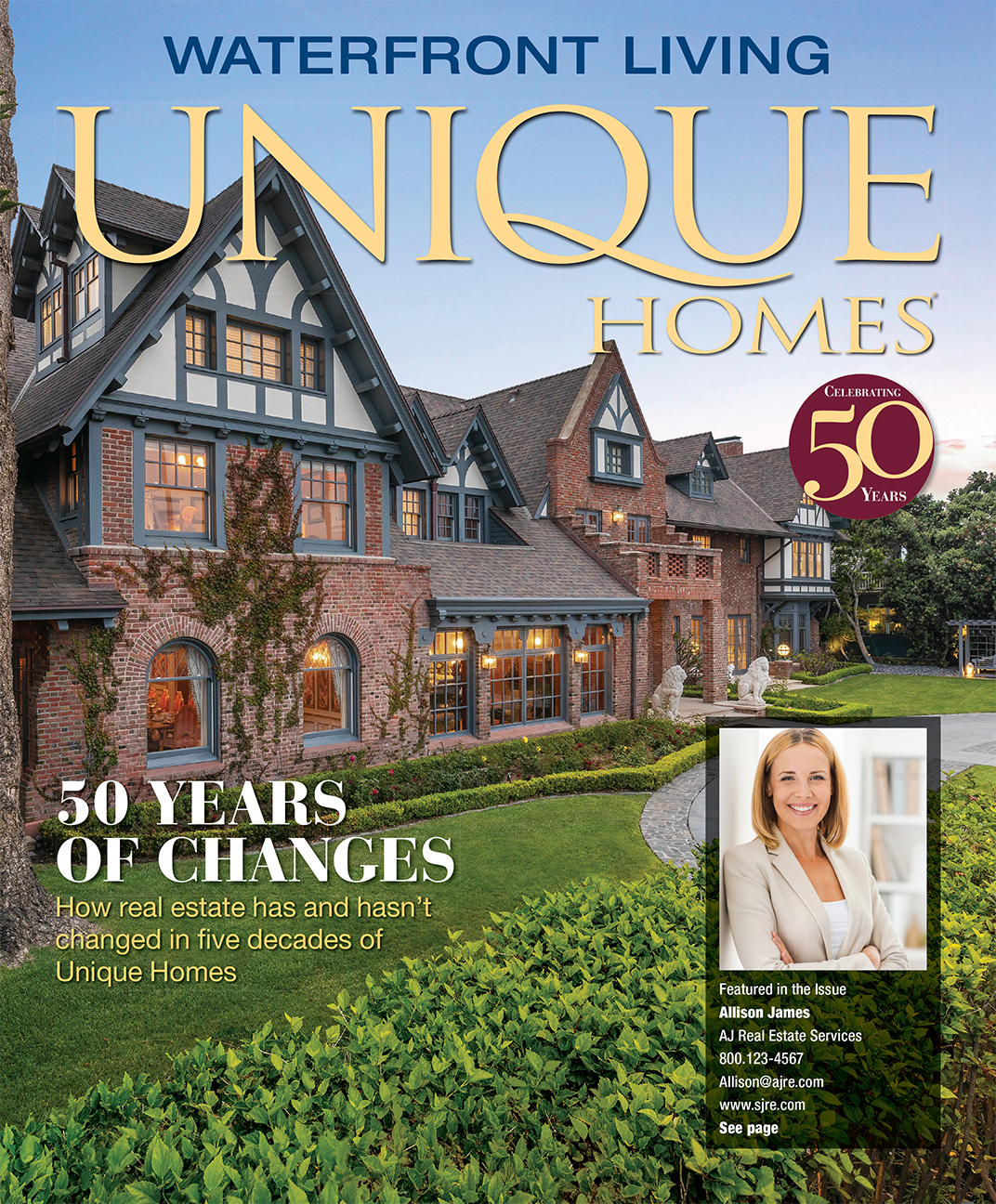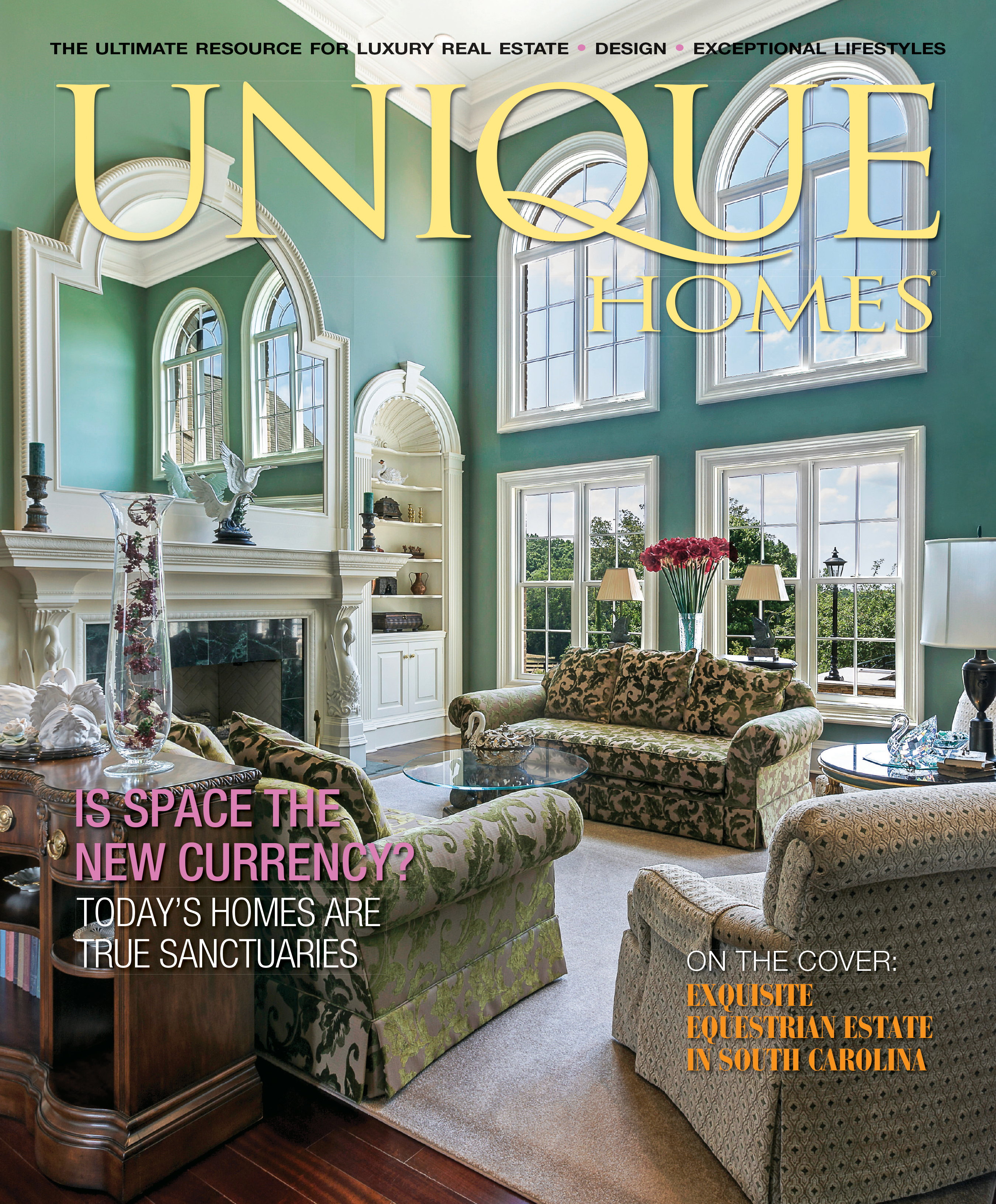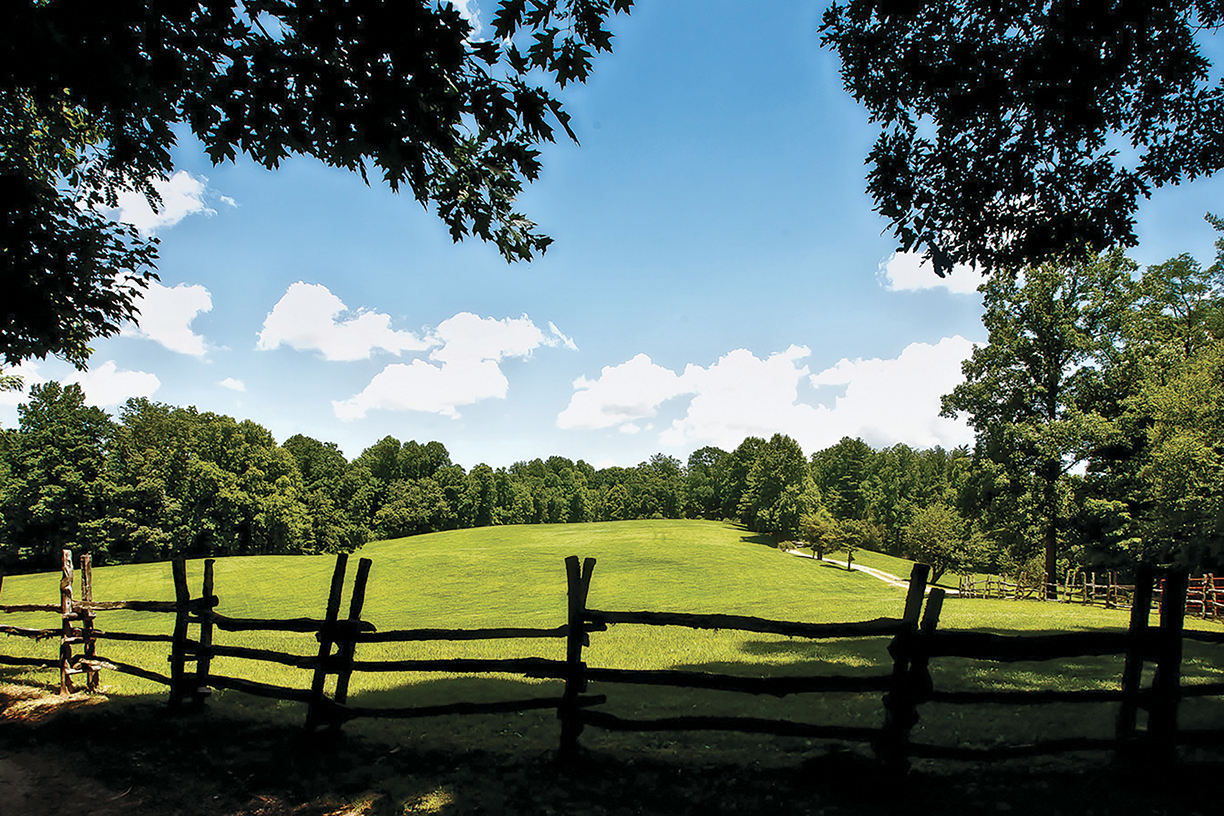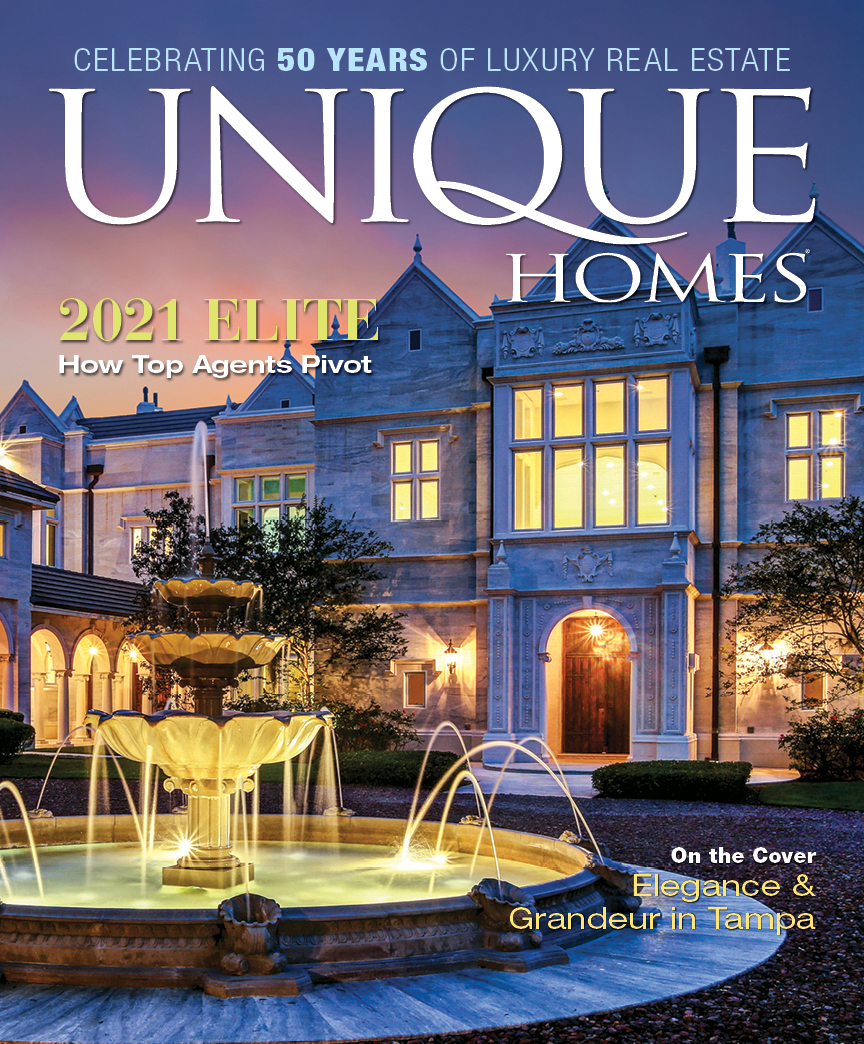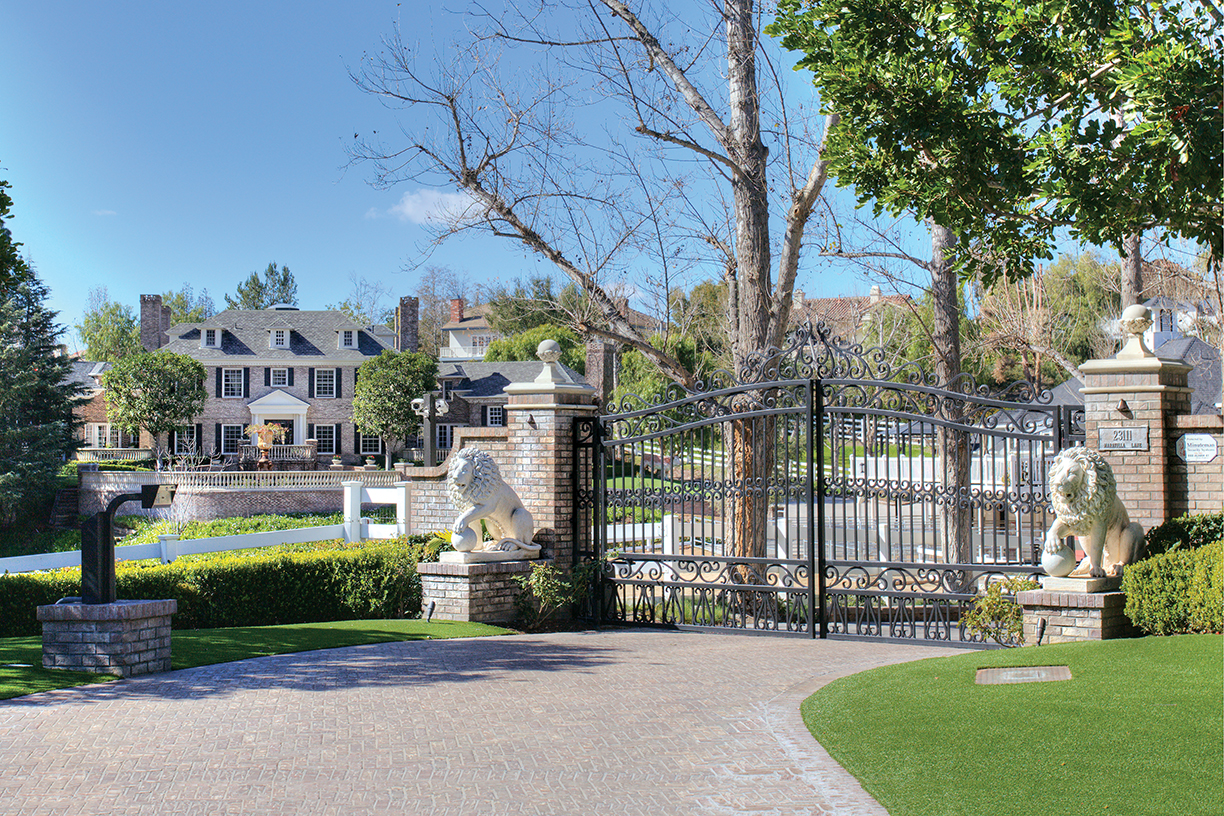Featured image: ©istockphoto.com / benedek
Canada, a land of beautiful scenery and congenial spirit, balances energetic city life with a calmer, relaxed lifestyle by the water. And if you ask Billie Pat Dall, sales representative at Bernice Whelan Realty Inc., about the real estate market, she’ll tell you that the area in which she sells (the Lake Simcoe and Barrie area of Ontario) is attractive for buyers who are looking for more space.
Only an hour north of Toronto, Barrie offers luxury homes at more affordable prices than in the city, ranging from $2 million to $20 million. Homes are complete with gourmet kitchens, main floor principal suites, home theaters, wine cellars, sports courts, and pools. Residents who live on the water enjoy charming boat houses with guest suites and tranquil water views.
According to Dall, Barrie is also an ideal area to raise a family, as residents have a wide array of outdoor activities at their fingertips.
“It is a place where kids can ride their bikes down to the beach and then over to one of the many tennis courts or to play basketball, and then back home to swim in their backyard pool. All of this is at your doorstep when you live in this region. There is also the added bonus of only being a one-hour drive away from Toronto, so parents can commute if they work in Toronto and visit for a Jays baseball game, theater or concert,” she explains.
Besides athletic endeavors, the Lake Simcoe region also hosts Canada’s largest camping and country music festival, The Hearts and Boots Festival, and Ontario’s biggest waterfront festival, Kempenfest.
Oakville, located just 45 minutes south of Toronto, boasts a thriving market as well, being one of the most densely populated regions in Canada. Lesley Cumming, sales representative at Sotheby’s International Realty Canada, describes Oakville and Burlington as the “home to hikers, bikers, economic trail glazers, casual boaters, and local vendor enthusiasts.”
In Oakville and Burlington, you can find condos situated on the shores of Lake Ontario and 50-plus-acre properties with rolling hills, bank barns, horse stalls, ponds, and paddocks. Locals can head over to lakes, beaches, marinas, and conservation trails to absorb the stunning landscape.
Cumming notes that most new buyers in this region were previously urban dwellers from the Greater Toronto Area, in search of a smaller community with more property space. With varied landscape, cuisine, and population, Oakville and Burlington find a way to keep residents and visitors entertained while also cultivating an at-home feel.
“There is so much that is attractive about our region from the diverse cuisine, our local specialty shops, to our beautiful landscape. We have something for everyone,” Cumming says.
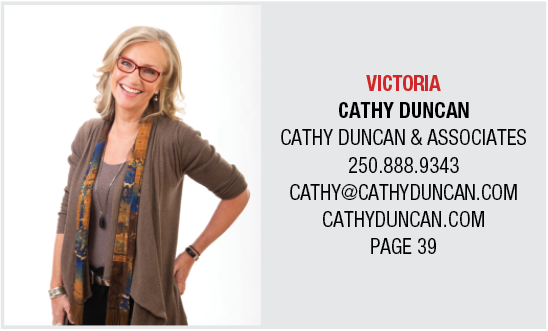

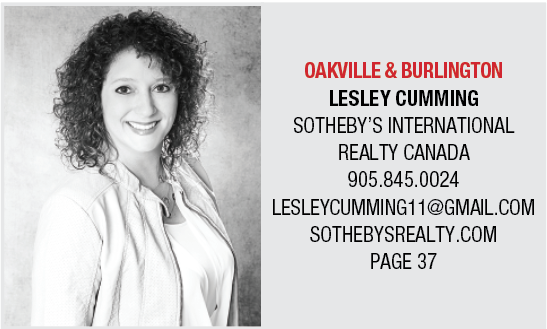
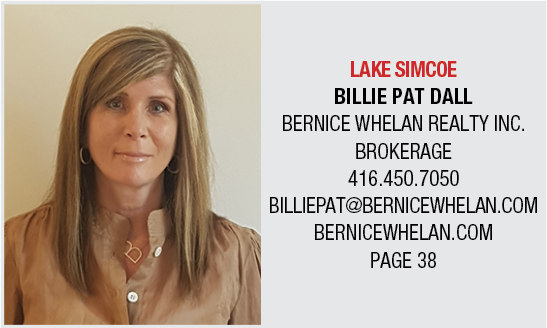
Cover photo ©istockphoto.com / Evgeny Zhigalov
Of all the changes brought on by the pandemic, what is here to stay?
From a drone’s eye perspective of 50 years, real estate might resemble a Mobius strip, a never-ending roller coaster of ups and downs with each boom-and-bust cycle sparking small changes and adaptations. But none have had an impact comparable to the pandemic, which ushered in an avalanche of innovation, new ways of doing business and a profound shift in consumer values. Some effects are a temporary response, while many reflect a significant transformation.
“The way that real estate as an industry operates has changed, and I believe it is a microcosm that can be applied to 90 percent of the economy out there. No one is going back, and that means the way we live, work and play changes forever,” observes Marci Rossell, former CNBC chief economist and chief economist for Leading RE. “COVID drop-kicked us into 2030.”
Ask agents if any prior cycle compares to the experience of the last year and a half, and they will tell you the pandemic boom is unparalleled. “I don’t think any Realtor in the country has had the experience we’ve had this last year! Yes, there have been good upticks in certain years in certain places, but never anything like this!” shares Trinkie Watson with Chase International in Lake Tahoe.
“We’ve certainly seen periods where you had to pivot skill sets and be really aware of the market and things that would impact clients, but we’ve never seen anything like the last year and a half, (and) that’s been compounded by a lack of availability,” shares Tami Simms, with Coastal Properties Group in St. Petersburg, Florida, who is also trainer for the Institute for Luxury Home Marketing.
“I think that last year was the most significant year of change from a tech perspective,” says David Marine, chief marketing officer at Coldwell Banker Real Estate. The pandemic market accomplished what major brands had been working on for years. “In 90 days,” he says, “every single real estate agent figured out a way to move the transition online. Now it’s commonplace. It’s no longer an issue.”
“Agents basically skyrocketed 10 years into the future, and they did it in a two-month period,” says Rossell. Rather than an abrupt switch, industry experts see real estate’s seemingly overnight embrace of new technology as acceptance of tools already available. Think of it as “escalating trends that were already underway that would have happened, but they are going to happen almost a decade faster than anyone expected,” explains Rossell.
Will it be a virtual world?
Prior to what Simms dubs “the Zoom age,” she says, there wasn’t a widespread understanding or trust or proficiency with virtual apps. “Now,” she says, “we know how to use it. We’re reasonably proficient at it, and there’s a level of trust. So, we’re able to embrace this technology. You know I don’t ever want to go back to having to communicate with out-of-state buyers purely by telephone.”
Virtual Sales are touted as the main advancement sparked by the pandemic, but an even greater benefit has been an industry-wide recognition and adaptation of virtual apps to enhance and expedite the process from initial views of a property to consumer education. “FaceTime is an effective tool, but really more to give a prospect a better idea of the home, not to induce an offer … though it could,” says Watson.
Looking ahead, agents don’t expect virtual sales to disappear, but they will continue to be a rarity. “I don’t think we’ll see many escrows where the buyer hasn’t physically seen the property. Yes, Zoom and similar will continue to be a part of our lives. Also, more defined photography for our listings … the importance of a comprehensive ‘walk through’ so prospects can get a good feeling for how the house flows,” says Watson.
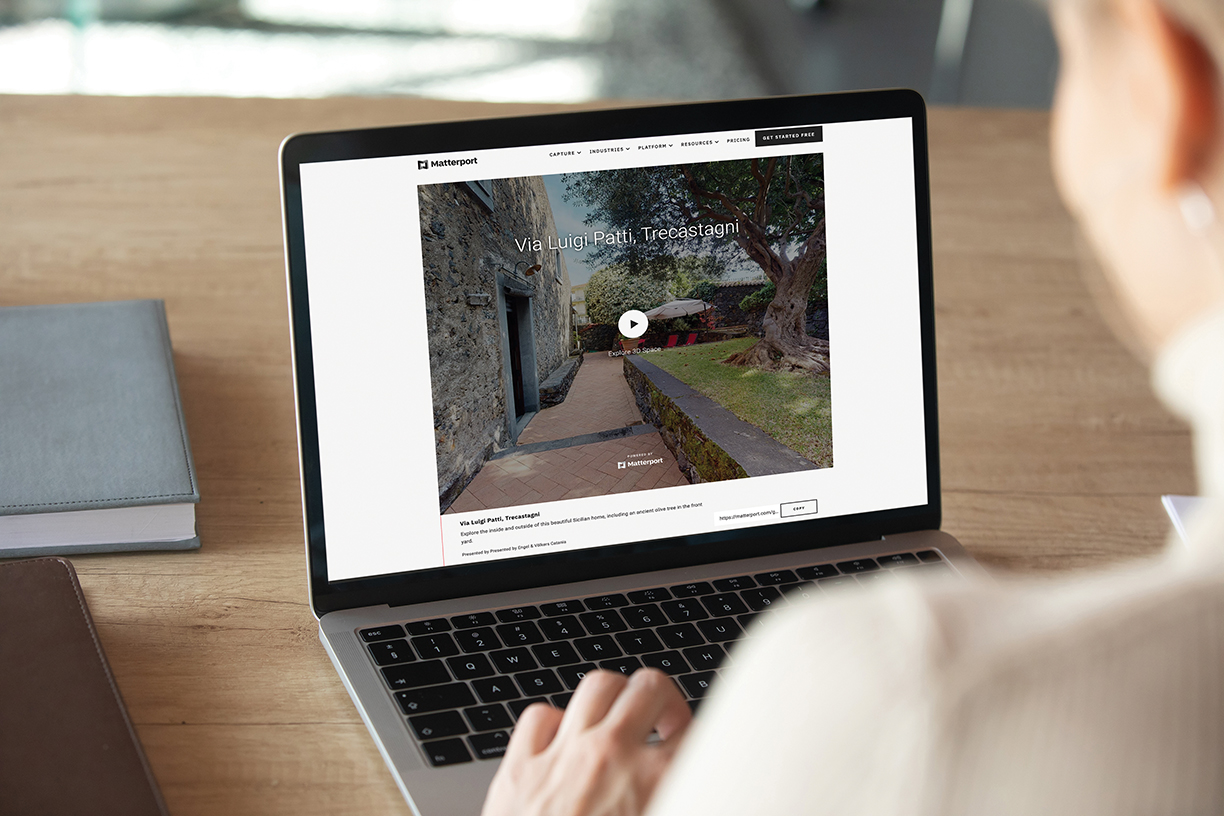
Detailed virtual walk-throughs became more important than ever, with platforms such as Matterport leading the way.
©istockphoto.com / fizkes
“In-person viewings have been very limited. No one wants to go to open houses. No one is walking about a house just for fun. People are looking online. They are viewing the pictures of a listing maybe 10 times before they see a house. So, a showing is more like a fourth showing, and agents need in-depth knowledge of a property,” says Joanne Nemerovski, with Compass in Chicago.
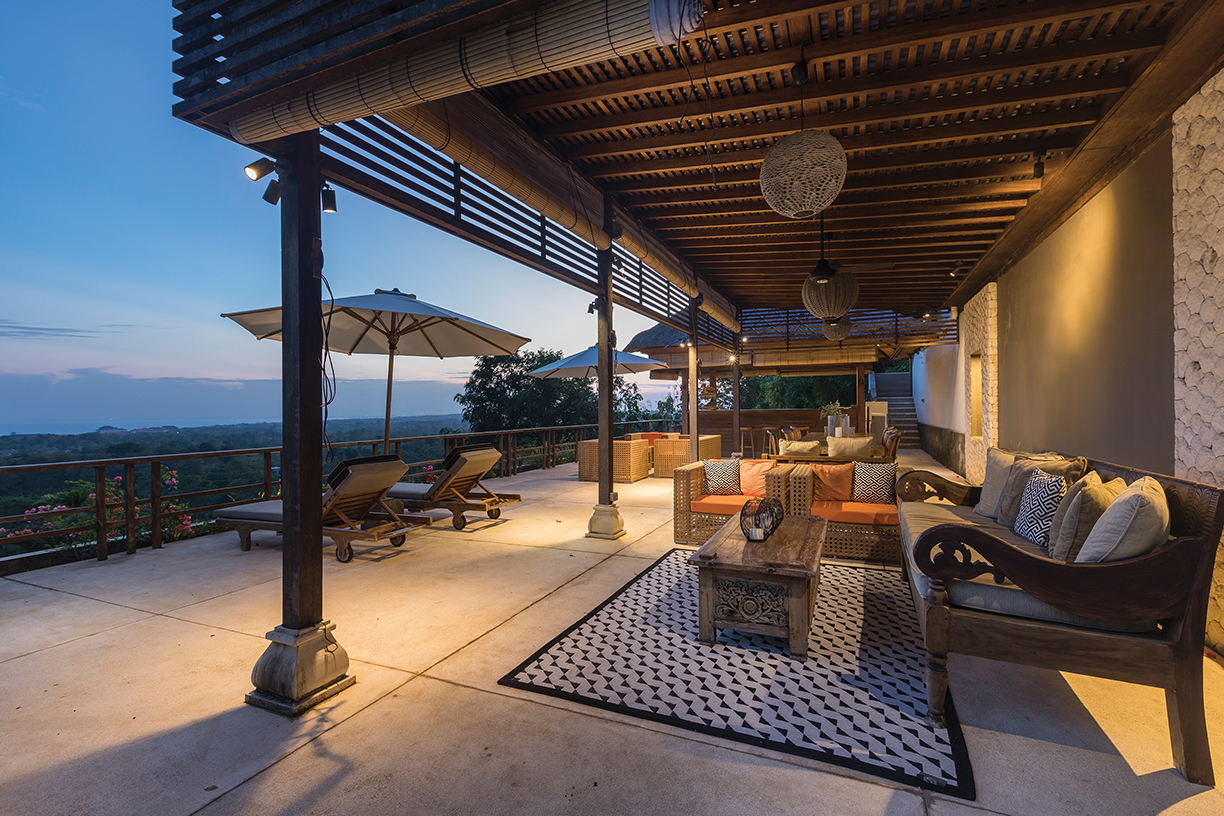
©istockphoto.com / joakimbkk
Dreaming of Home
The ability to work remotely is often cited as the main driver for the surge in sales, but even more fundamental are new consumer values regarding home and lifestyle. Citing millennials, who now comprise a substantial portion of buyers, Nemerovski says many were starting careers and literally were never home, so home basically was a shoebox they visited. “I think that sentiment has changed. Home is where the heart is. It has become the center of people’s lives. People are also more respectful of their homes.”
Everybody wants their dream home,” says Frank Aazami with Russ Lyon Sotheby’s International Realty in Scottsdale, Arizona, “because they just cashed out of another home that maybe they inherited or maybe were there for 20, 30 or 40 years.”
Buyers’ expectations of quality are high and will continue to be so. “People understand the level of finishes better than ever before. We’ve gotten so much better with respecting architects, good architects’ work, good designers’ work,” he says.
“All of a sudden, consumers are finding that now it’s not all about a commute. It’s about ‘does the place that I live offer me the things that I want to do when I have a little extra time, both inside and outside.’ Outside spaces have always been a luxury item, but more so now than ever,” says Simms. Topping wish lists are beautiful recreational facilities, inside and out. Also becoming more desirable is access to nearby outdoor venues such as parks and trails. Before COVID-19, outdoor living was a growing trend; now a connection with nature has become almost an essential for homes, particularly new construction.
Skills Put to the Test
With properties selling days or hours after going on the market and multiple platforms broadcasting new listings, it would seem agents’ skills are not essential. However, the pandemic market has proved the opposite. “It’s been a really intense time for real estate professionals in terms of making sure that their communication skills are absolutely the most important thing that they have, setting expectations, both on the seller side and the buyer side,” says Simms.
“There’s more attention to vetting prospective buyers, making sure they are qualified to buy before showing them property,” adds Watson.
Price is only part of an offer’s appeal to sellers, and crafting a winning offer has been an important skill for agents and buyers in the current market. Even when multiple offers become less of the norm, this aspect of buying will continue to be important.
An intense market tempts buyers to forgo contingencies. “It has been definitely challenging to counsel people on strategies to be successful in acquiring properties, but also in making sure that they truly understand the ramifications of releasing contingencies and know the risks they are taking on,” shares Simms.
“A downside of the intensity has been buyer’s remorse, cancellations before closing, some attempted lawsuits … a result of no inspections, jumping too fast without thorough exploration, et cetera. This would be a small percentage of the purchasers, but certainly a reflection of ‘herd mentality’ going the wrong way!” says Watson, referring to the pressure buyers felt to make a decision.
Cooldown Ahead
With days on market hovering just over 14 in July, prices rising in 99 percent of all metro areas, and double-digit price increases in 94 percent of metros (according to NAR), the current pace might seem no less fevered. Still, indications of a transition are beginning to filter out from a number of locations. Days on market are increasing ever so slightly, and overblown prices are being reduced. Or, as Katie Treem at Keller Williams Realty in Portland, Maine, explains, it might be that a property receives 20 offers instead of 40. “We’re still seeing people moving from New York, Boston, Connecticut and D.C.,” she says.
Also, agents like Treem are just beginning to see a few who bought in 2020 reselling. Sometimes they improved the property, but in others, decided the lifestyle was not what they desire or the commute, even for occasional days in the office, was too difficult.
In Tahoe, Watson says, “I believe the intensity has certainly calmed down, and I suspect very few listing agents will accept an offer from a buyer who hasn’t physically viewed the property. That goes for waived inspections … I’d be surprised if many are doing that any longer.”
No Bubbles Here
Bubble talk has become almost a perennial for real estate, but experts such as Rossell do not subscribe to this characterization of the market. Rossell says, “It’s not a bubble. It’s simply real demand bumping up against severe supply constraints. But this doesn’t mean house prices continue to go up. But what it does mean is you’re very unlikely to see the bottom fall out of the market, the way that you did in 2007, 2008.
“September 11 forever changed the way that we thought about terrorism. And I think in the same way, the first round of COVID in March of 2020 forever changed the way that we thought about public health, and pandemics. I think we’re all going to be living with the reality that at any given time something like this could happen, just like terrorism.”
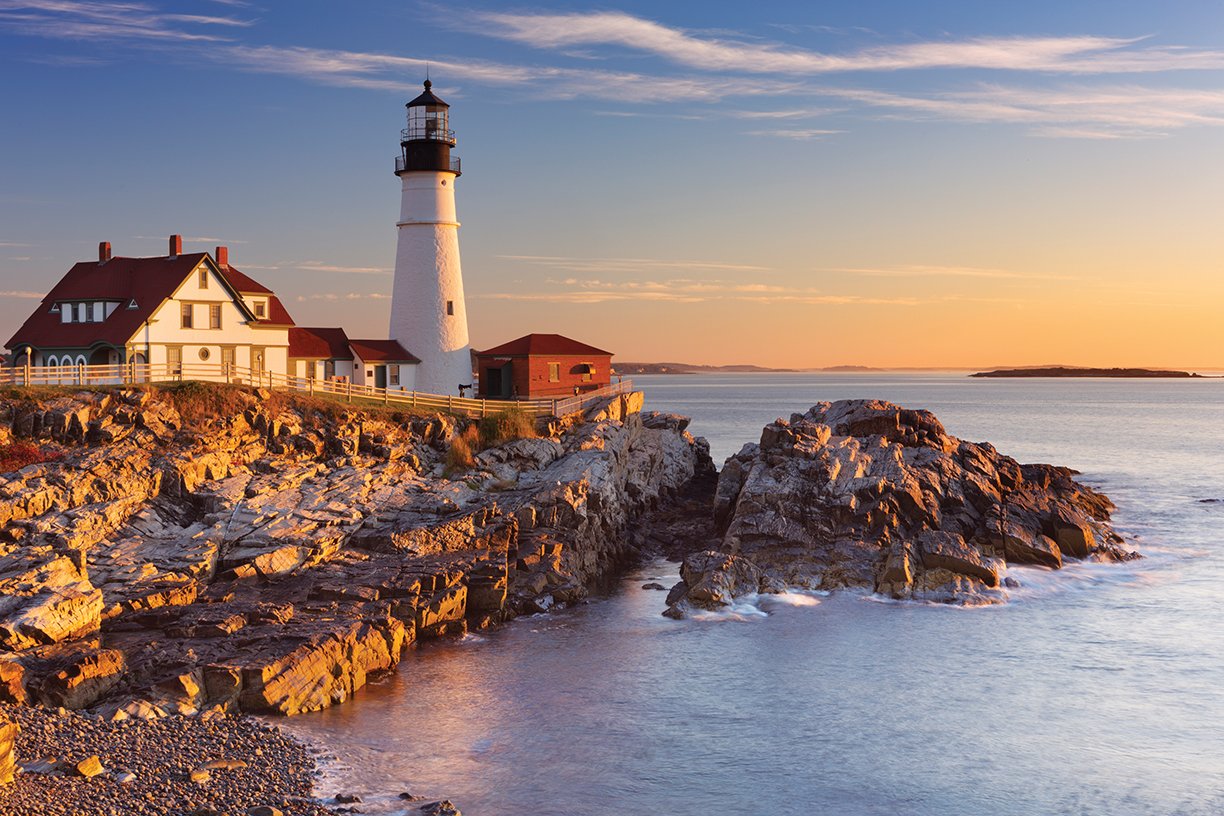
Days on market are increasing, and overblown prices are being reduced. It might be a property receives 20 offers instead of 40, says Katie Treem at Keller Williams Realty in Portland, Maine.
©istockphoto.com / sara_winter
This story originally appeared in Unique Homes Fall ’21. Click here to see the digital version.
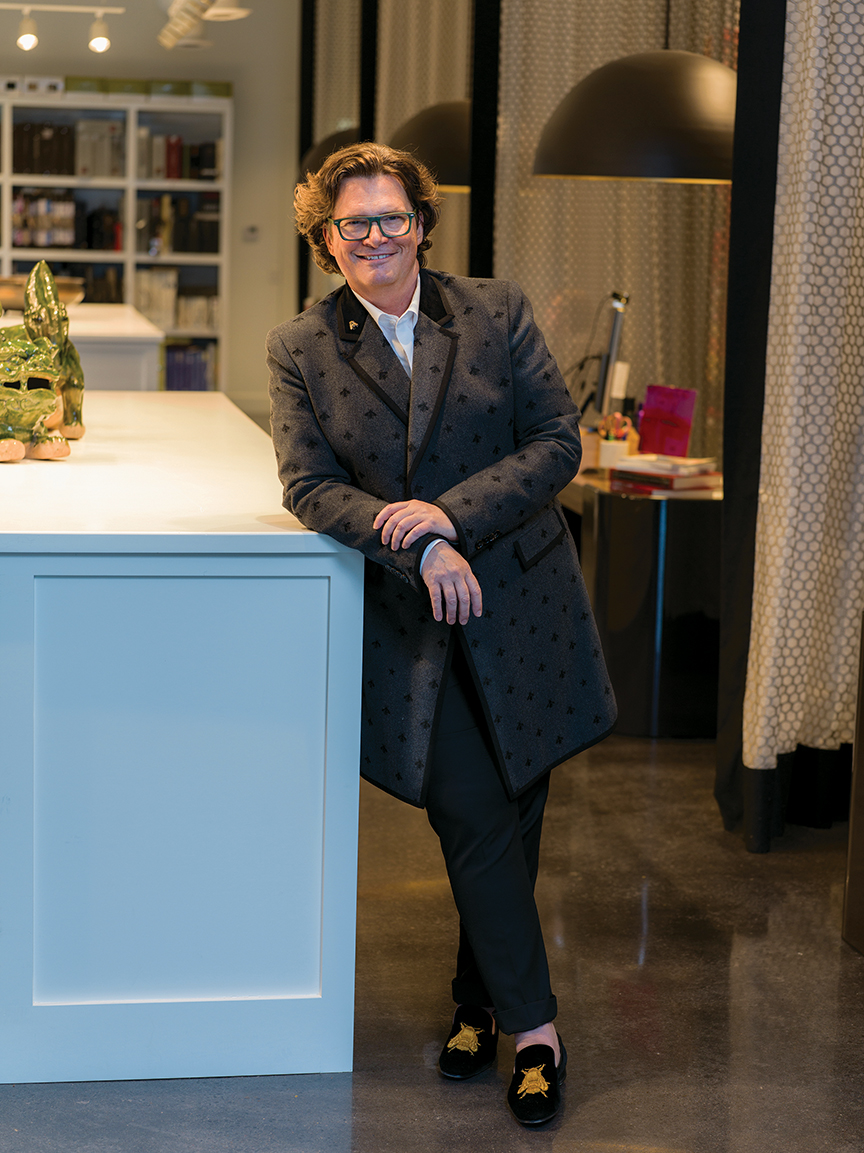
Photos by Mark Jackson/CHROMA Photography.
Designer Chris Goddard grew up in Arkansas in a house full of built-in furniture. As his love for design started early in life, he says this situation “drove me nuts.” Now, as the principal founder of Goddard Design Group, he credits these hurdles, as well as the creative nurturing of his family, for his love of change, which continues to inspire every facet of his work.
It was the need to produce something new every time, and the drive to push himself past his own creative limits, that helped Goddard become a finalist on the most recent season of HGTV’s Design Star: Next Gen.
We spoke with Goddard about his whirlwind experience of creating interior design for TV, and how his reality TV appearance inspired an even deeper love for design than he’d had in 30-plus years.
For those who haven’t watched the latest season of Design Star, can you relay to audiences your method of design?
I’m a big proponent of change, if you’re doing the same thing you did 3 years ago you’re doing something wrong. I never do the same thing twice, so in 30 years we’ve never used the same fabric twice, the same piece of furniture twice — it’s kind of my trademark. I don’t want anybody to have something somebody else has.
What has been your biggest inspiration, since you were young, to work in such a creative field?
I grew up in a very creative family, always surrounded by creativity and the arts. My family, especially my mother and my grandmother, were big on travel and exposing me to as much as possible. So I traveled a lot and spent a lot of time in museums. They would always take me out of school for weeks at a time; they always said ‘the best education was travel and experiencing things.’ I grew up a little globe-trotting kid, seeing the world, which was wonderful and super inspiring.
You received both design and business degrees in college. Have you found this type of structured education helpful as well?
I’ve found that having a business degree really makes a huge difference. Most designers are creative but can’t always run a business, and I’ve been able to strike a good balance. That’s not to say I haven’t ever screwed up — we all have — but those are called learning experiences.
You mentioned loving to travel, what’s one of your favorite places to visit?
One of my favorite places is Morocco. I try and go once a year. I’m super inspired by the colors and textures, anything that’s handmade. When you have something that’s made by hand, at least one thing in your house, it gives your house a soul and gives the room a sense of place, like it’s always been there. That’s my whole deal, creating timeless rooms. I don’t want anything to look like it was stuck in time, and the key to doing that is layering in parts of the past, present and modern so you get something that never really goes out of style.
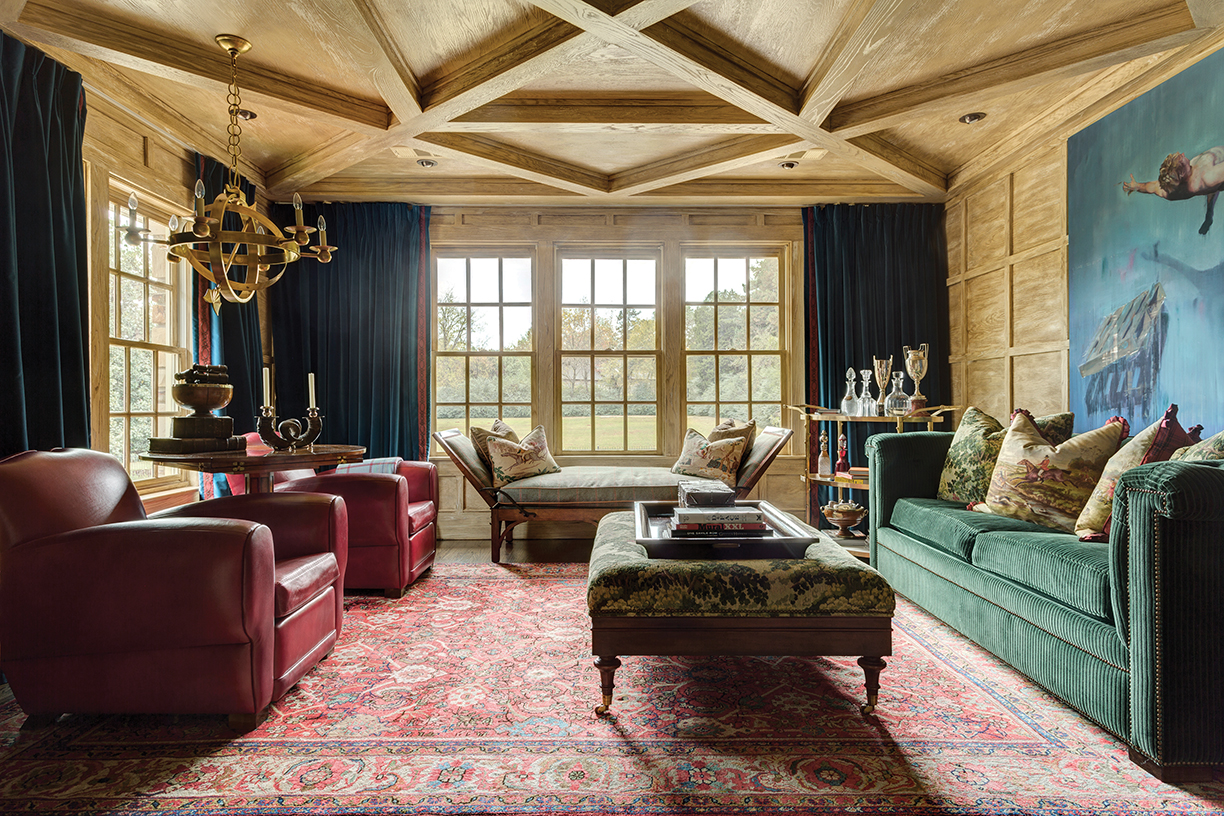
A traditional Southern estate with hints of modern elegance in Fort Smith, Arkansas.
What is your primary focus when you’re designing a space?
I’m designing for the client, or if it’s commercial, for the space. You want to create an experience that is singular to them. I think the death of most design is becoming a trend or doing anything trendy, so I always try to be very specific in what I’m doing and make sure it’s uber-tailored to the space or the client.
I think as a designer the biggest compliment I can ever get is when someone comes in and says “Oh this looks like the homeowner,” instead of “this looks like a Chris Goddard house.” The biggest compliment is that it’s a reflection of the homeowner or the space.
What was it like to be on an HGTV show? Did you enjoy your time on set?
When I started my business I taught myself how to do everything, how to put on wallpaper, how to paint — to be a good designer you have to have an understanding of all the people that work for you. I haven’t done that [in person] in over 25 years, but [on the show] it all came back to me like riding a bike. … Each episode was like a day and a half, so cranking everything out and then being judged on it was a little tricky. In our career, our clients are the judges and you kind of have an idea of what they want, but when you go into things blind, you don’t know.
For me it was more fun because I got to push myself out of my comfort zone, which I really needed. I kind of looked at the whole experience as an opportunity to reignite my passion for design. It’s easy when I get to the level I am at and get comfortable — and I think I was feeling a little comfortable — which was the reason I wanted to compete. Doing it, I came back and I couldn’t have been more excited about design than I had in my whole life. It was the best experience I could have ever had.
What lessons have you taken away from the experience?
It’s best to go with your first thoughts. If you get too much in your head, it throws off the creative process. Don’t be afraid to try anything new. The main thing [I learned], though, was to trust my gut, be authentic and keep pushing myself. And to learn something new. I learned so many new design tips, technology tips — everyone had so many things to share. It was nice to just be able to soak it all in.
How have things progressed since going back to the firm? Any big plans for the future?
I’m excited to see what happens in the next few years, as design is having a Renaissance. Right now we’re busier than ever, since people have been stuck in their homes and they see things they want to change. They want multifunctional spaces, beautiful spaces, there’s been this huge resurgence in an interest in design. The whole world is once again interested in how they live.
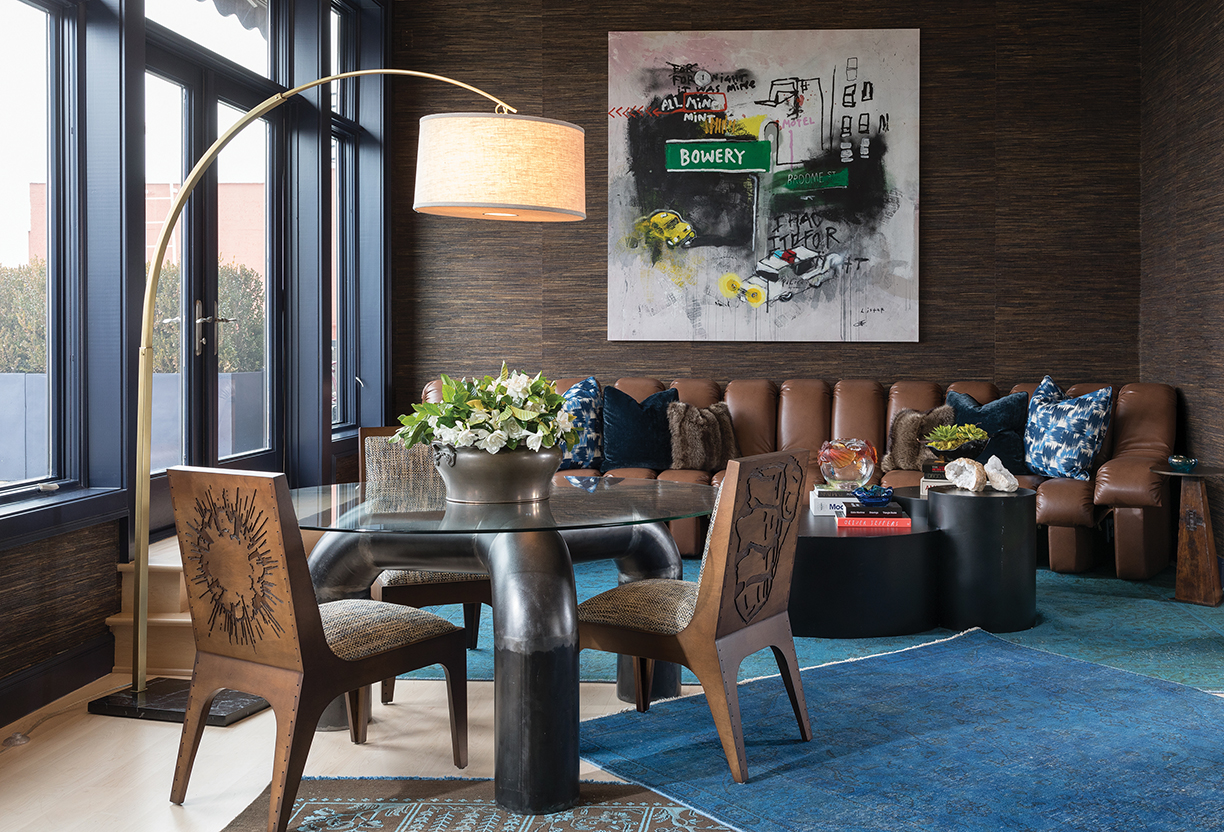
The design style of this home evolved from Spanish Mission into an eclectic mixture of modernism and neoclassical, created through thoughtfully curated collections, from vintage Chinese rugs to contemporary art.

A key component to the design of this Fayetteville penthouse was the incorporation of pieces from the client’s extensive modern art collection, seen above and below. “It was a lot of fun to pull modern furniture and art together to create a new space that still resonates our client’s unique, eclectic personality,” according to Goddard Design Group.
Top photo by Rett Peek Photography.
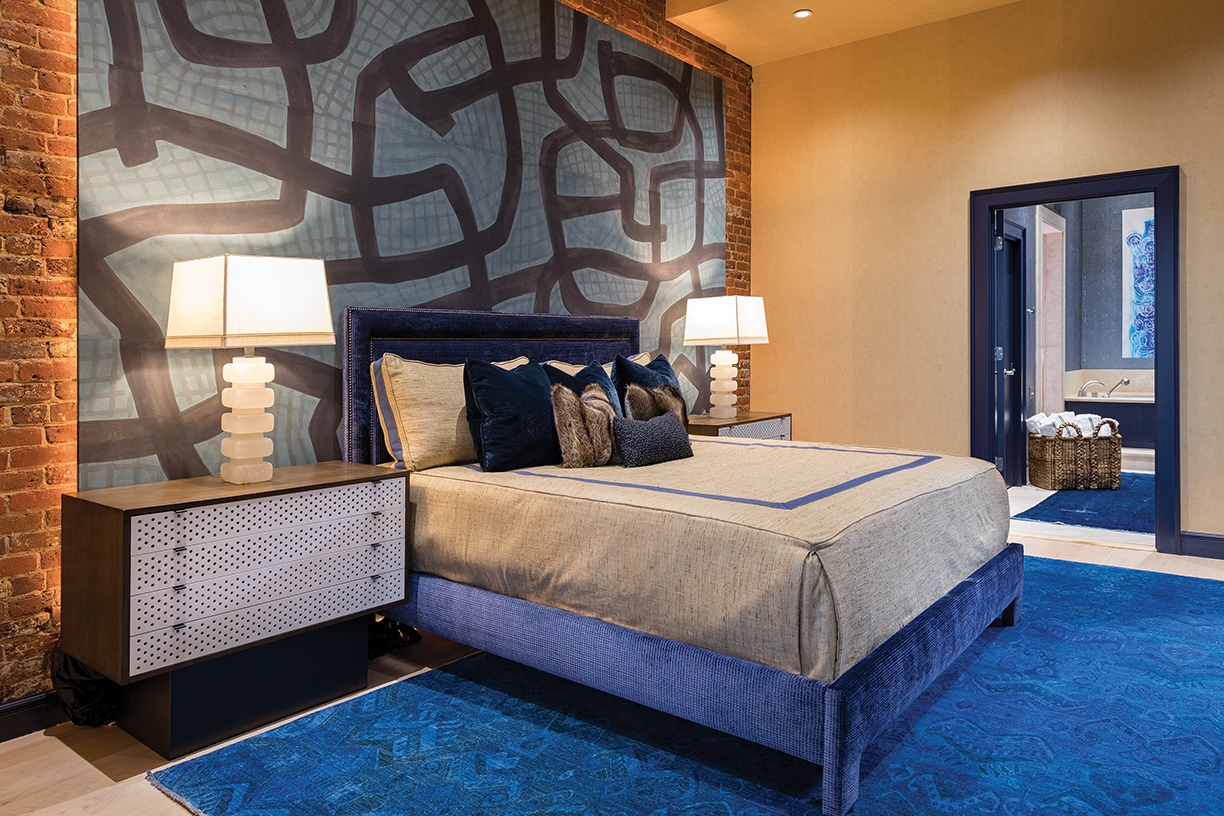
The Manor from Unique Homes 2017 Ultimate issue.
Photo courtesy Hilton & Hyland.
As we mark the 17th “Ultimate” edition of Unique Homes, we look back at the exceptional properties and agents who have been a part of the annual celebration of the most expensive real estate in the U.S.
Over the 50 years since the first issue of Unique Homes rolled off the presses, countless estates have graced our cover. Hundreds have captured a top position on Ultimate Homes’ list of the most expensive, but only a very few are real estate legends. Trackback through record-setting sales and property listings, and a handful of properties filter to the top, including an equally select cadre of real estate agents.
What destines a property for legendary status? Rarity, provenance, architecture, land and location all play a role. “We have represented and sold many properties that are above and beyond, but what makes them legendary is the architecture and the history of the property, including notable prior owners, location, and the property amenities that set the bar for other luxury properties,” explains Judy Zeder, a member of the Jills Zeder Group (along with Jill Eber and Jill Hertzberg) with Coldwell Banker Realty in Miami.
“What truly makes an incredible luxury property is that it’s something that someone else would never have. It’s not just another house with a different material feature,” shares Shari Chase, founder of Chase International Real Estate in the Lake Tahoe/Reno region. “Rarity is huge,” she says, as is “not being bumper to bumper with a lot of mega mansions that are exactly the same.”
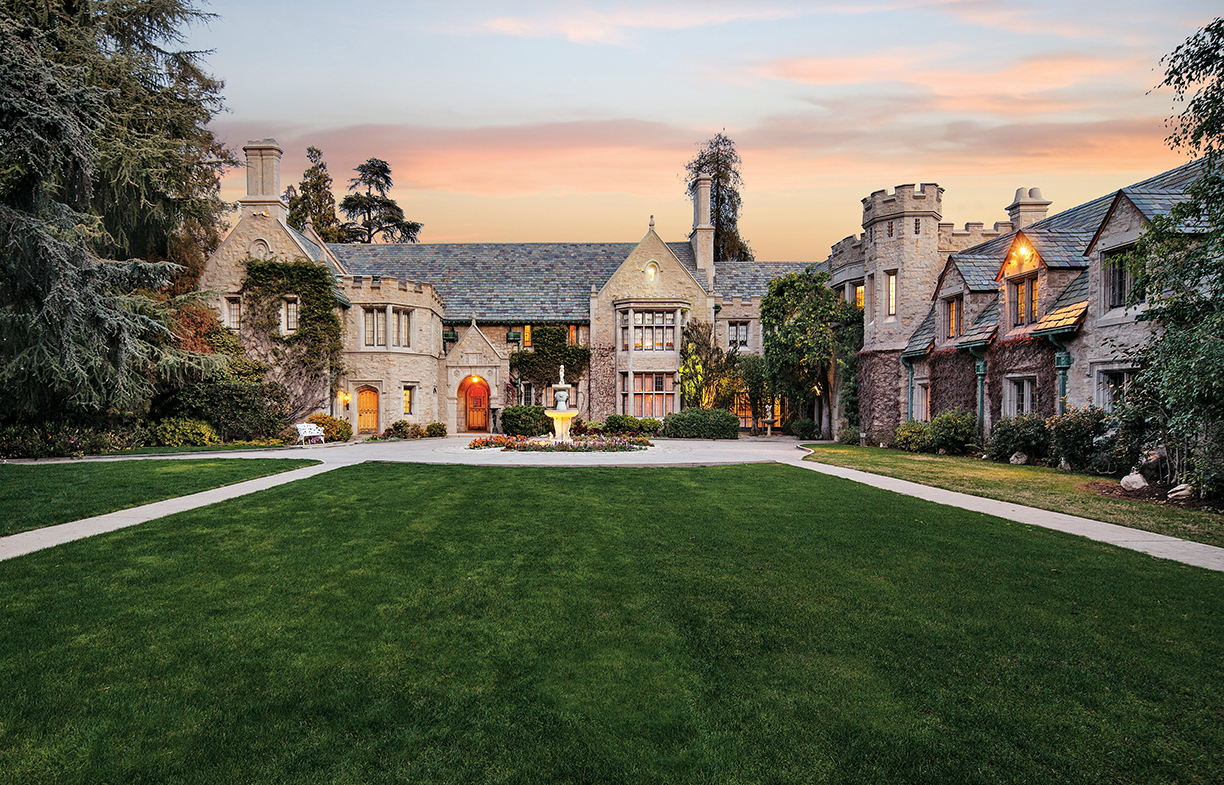
The 2016 sale of the Playboy Mansion cracked the $100 million benchmark in L.A.
Photo by Jim Bartsch.
Owlwood, Pickfair, Le Belvedere, Greenacres and Chartwell: the list of legendary properties that Joyce Rey, who heads Coldwell Banker Global Luxury’s division for Southern California, has sold is only surpassed by the number of accolades she has received over her more than 40-year career. Her sales have achieved price records multiple times, sometimes for the same property. In 1976, she sold the Sonny and Cher mansion for $1.2 million, a record at the time. Two years later, she sold it again for $4.2 million, which surpassed all other prices, setting a new high in the U.S. and worldwide. “It was a really big deal,” she says. “It changed the marketplace.”
The storied history of this property, which was renamed Owlwood to honor owls living in the estate’s towering trees, continues to the present day. The acquisition of neighboring properties and additional acreage over the years enhanced the value. Last offered for sale well above $100 million, it appeared on Unique Homes’ Ultimate list last year at $115 million. It sold in December in an off-market transaction for a reported $88 million.
Once dubbed “the Crown Jewel of Beverly Hills,” Owlwood’s resume includes a number of other high-profile names and celebrities, including Marilyn Monroe.
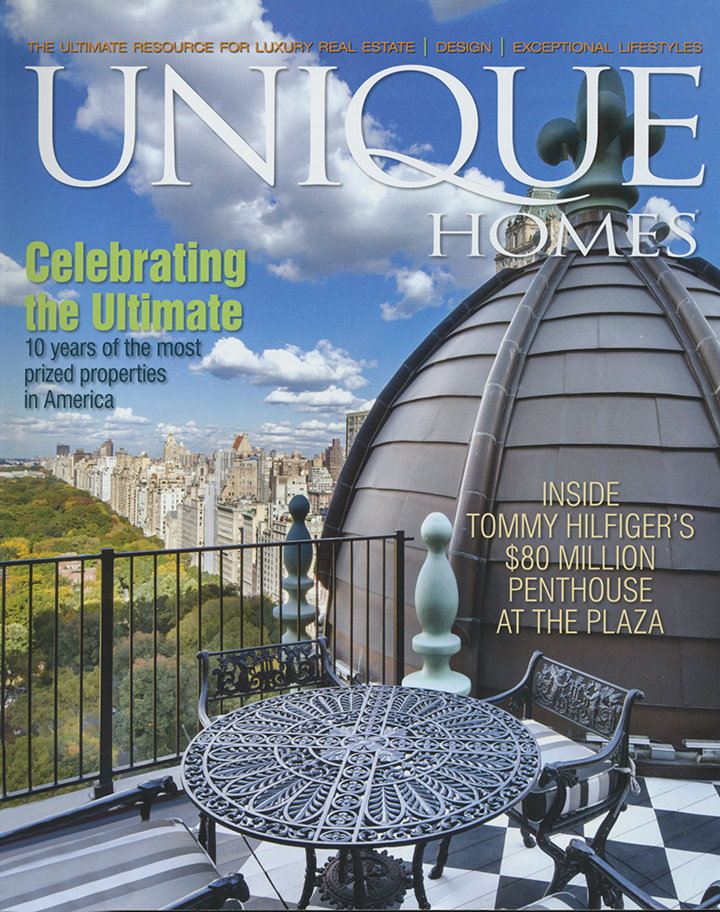
Ultimate Manhattan? The Tommy Hilfiger penthouse at The Plaza in New York City graced the cover of Ultimate Homes in 2014.
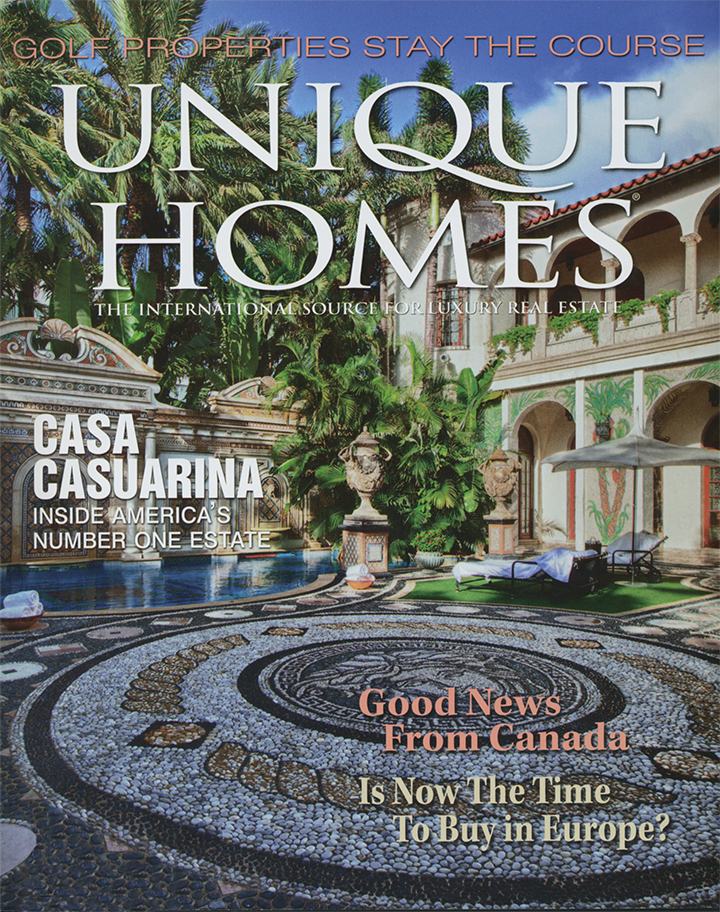
Casa Casuarina, seen here on the Unique Homes Fall 2012 cover, was the home of Italian fashion designer Gianni Versace.
Having a much-loved celebrity often adds to the cachet of a property. “Americans love celebrities,” says Jill Eber. “When a celebrity is comfortable using their name in connection with a property, it really makes a difference. Every home comes with a story and a celebrity’s story just makes it more interesting. A lot of properties are sold by very successful business people and the properties are just gorgeous, but when a home is sold by a celebrity or athlete, buyers are curious and sometimes they are attracted to that cache.”
Few celebrity homes received as much buzz as the Miami Beach mansion owned by the late Gianni Versace. “Everything about the Versace property, known as Casa Casuarina, was fun and exciting,” says Jill Hertzberg, who, along with Eber, sold the property. “It was a totally iconic property known worldwide. Every room was different with the most extraordinary mosaic tile designs throughout. The property was built for fun and entertainment and the buyers who purchased it just loved it! They all jumped into the pool on the day they got it. Standing in front of the mansion with reporters from all over the world is something I will always remember.”
Among our Ultimates, few have generated as much interest as The Manor, dubbed The Spelling Manor when it came to market in 2009 at an unprecedented price of $150 million, eventually selling for a reported $85 million in 2011. The buyer, Petra Ecclestone, daughter of Formula One billionaire Bernie Ecclestone, embarked on an extensive remodel, eventually bringing the estate back on the market in 2016 at $200 million. The 2019 sale price, $119.7 million, set a new, but short-lived, record for Los Angeles. Only a few months later, another legendary property, Chartwell, sold for a reported $150 million, achieving a new benchmark.
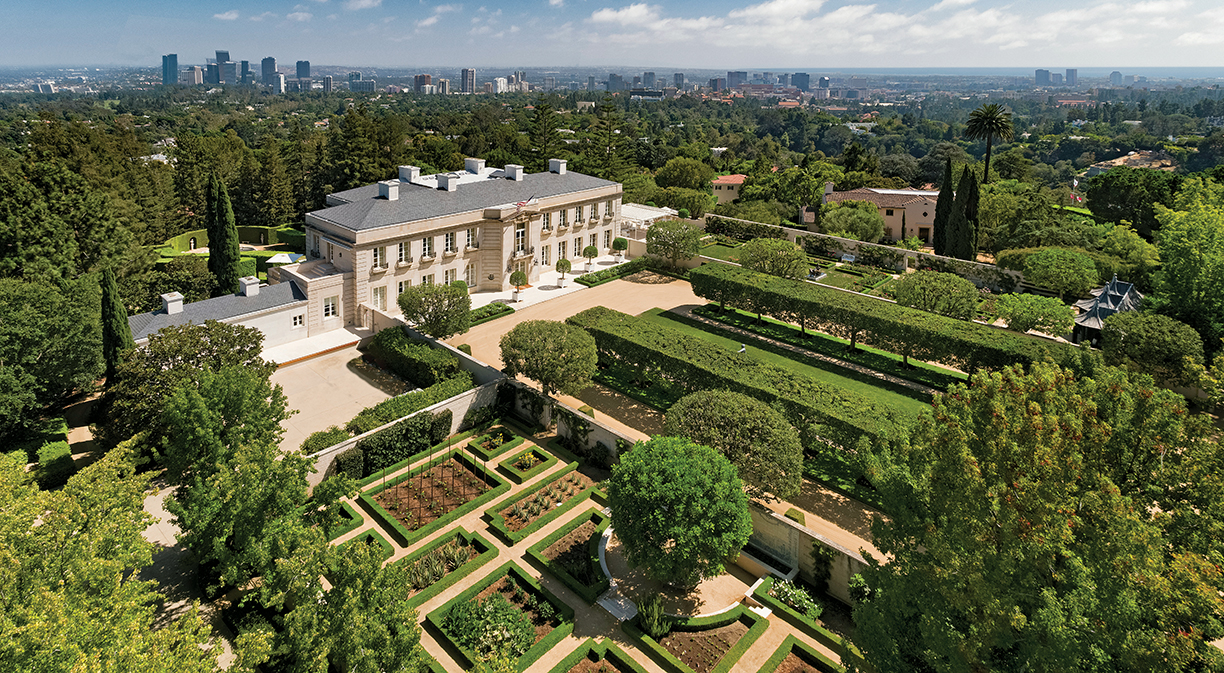
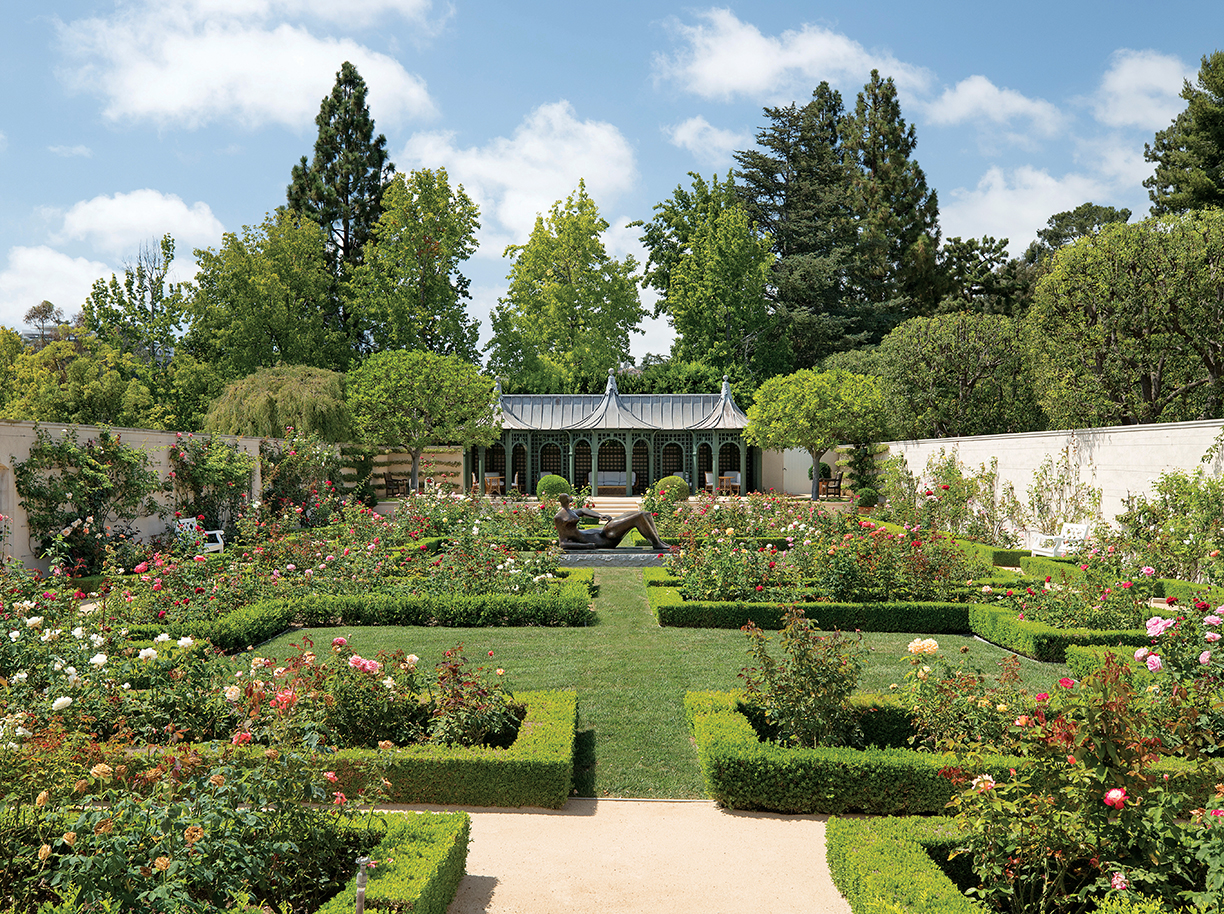
Designed by Sumner Spaulding in 1933, Chartwell, like several other legends, including the Manor, was inspired by French chateaus. Located on 10 acres in Bel Air and surrounded by pristine gardens, it ticks off all the attributes of a legendary estate. Although it is notable for the highest list price, $350 million, in 2017, few other mansions are as familiar to so many. Featured on the 1960s sitcom, The Beverly Hillbillies, it was home to the Clampetts.
It’s worth noting the estate is actually in Bel Air. The Bel Air Hillbillies might not have been as catchy a title as the Beverly Hillbillies, says Gary Gold, with Hilton & Hyland, one of the agents listing the property. Using a home at one address, but identifying it as being in another location in films and television is not unusual, according to Gold.
Chartwell was listed by a team of agents including Rey and Jade Mills with Coldwell Banker Realty, and Gold and Jeff Hyland with Hilton & Hyland. When prices breach $100 million, it’s not uncommon to have multiple brokerages marketing the property.
“These big sales have many layers of complexity. It can be a trust, a bankruptcy or a probate, and everyone at this level is well represented. And at $100 million, no one is flexible,” explains Gold. Often the team of agents and brokers will divide the tasks depending on their expertise. Gold says he is always 100-percent committed to getting the deal done.
Having brokered the sale of the Playboy Mansion, Gold jokingly refers to himself as the “Roger Bannister of luxury real estate.” Like Bannister’s one-minute mile, the Playboy Mansion smashed the $100 million ceiling in L.A. and opened the door to a number of legendary estates trading at or over $100 million, including Chartwell and The Manor.
“These types of mansions usually come on the market once in a blue moon, once a decade, but recently a number have traded in the last couple of years,” Gold shares.
When it came on the market, the Playboy Mansion received lots of media coverage. Still, when Jade Mills, who represented the buyer, initially saw the property, she wasn’t expecting to find a zoo. The property had “been talked about, but not really the zoo and the peacocks and everything that was there,” she says.
“When I first went there, there were all of the animals, monkeys, peacocks were all over the property — I just thought that it was so amazing that right in the middle of Holmby Hills, you had all those fabulous animals. So, it was just fun to see, and to see the grotto.”
Gold says the number of birds increased over time as local avians decided it was a great place to call home and joined the menagerie.
Another interesting tidbit was an abundance of pushbuttons in this home, sort of a smart home before the era of home tech. For example, push a button and the bed would turn around. The grotto had an array of buttons, all glowing red, and a phone from which you could dial up whatever music you wanted
Foundation of Value
But for legends, it is the amount of land or an impossible-to-replicate location that usually sets them apart. A majority occupy sizable parcels, whether it’s hundreds of acres like Tranquility in Tahoe, or a dozen or less in Bel Air or Holmby Hills. The exception are places such as Malibu, where a setting on the beach is more prized and rarer than acreage.
“Regardless of the condition — like new, falling down or anything in between — each owner puts their heart and soul into these homes,” shares Robert Kinlin, co-owner of Robert Paul Properties, who works with some of the most expensive in Boston and on the Cape. “But a lot of times, people are buying the land and the feeling it evokes when they’re outside walking the property, because you can’t change the land, but you can change the house.”
“The biggest thing you can have with a beautiful estate is Mother Nature,” adds Shari Chase.
When Chase founded her brokerage in 1986, the word “luxury” really wasn’t part of the vocabulary. Instead, she says, “we talked about estates and extraordinary estates, and her tagline was Exceptional Properties for Exceptional People. “I wasn’t going to bother with just any kind of real estate. I only wanted the best, and whether I had one or two or three sales a year, it didn’t matter. I mean, as long as they were fantastic. I think the very first sale was lakefront.” Early on, Chase was involved in what she describes as “the most extraordinary sale we ever had at Tahoe,” the Thunderbird Lodge at a record $50 million. “It held the price record in the entire nation for over 8 years.”
Not often are newly constructed homes destined to become legendary, but Le Belvedere, sited on over 2 acres in Bel Air overlooking the city with a romantic landscape that includes a swan pond, rose gardens and a 280-degree panorama of city lights, is the exception. Over-the-top features such as opulent materials, a ballroom seating 200, a media room seating 50, and a 500-bottle wine cellar, were exceptional when it came on the market in 2009, but the way every detail is executed, the stateliness of the architecture and the sense of harmony from all facets working in perfect sync pushes it from a “stellar property” to a legendary estate.
Le Belvedere, like Tranquility, is also exceptional for its amenities. At that time, shares Rey, “people weren’t building so many of those major theaters. Before that, only those in the industry had large screening rooms.
Rey was involved in the sale of Le Belvedere for $50 million — the highest in the U.S. in 2010 –— and again in 2018 for $56 million.
Amenity Wars
In recent years, there have been a number of newly built for-sale trophy homes, some with list prices stretching current benchmarks. What sets these properties apart is the number of over-the-top features, including curated art installations, stocked wine bars, car collections, an onsite staff and even a helipad. The objective — to include everything someone might want in a home — is aligned with the motives behind the inclusion of extensive amenities in classic estates.


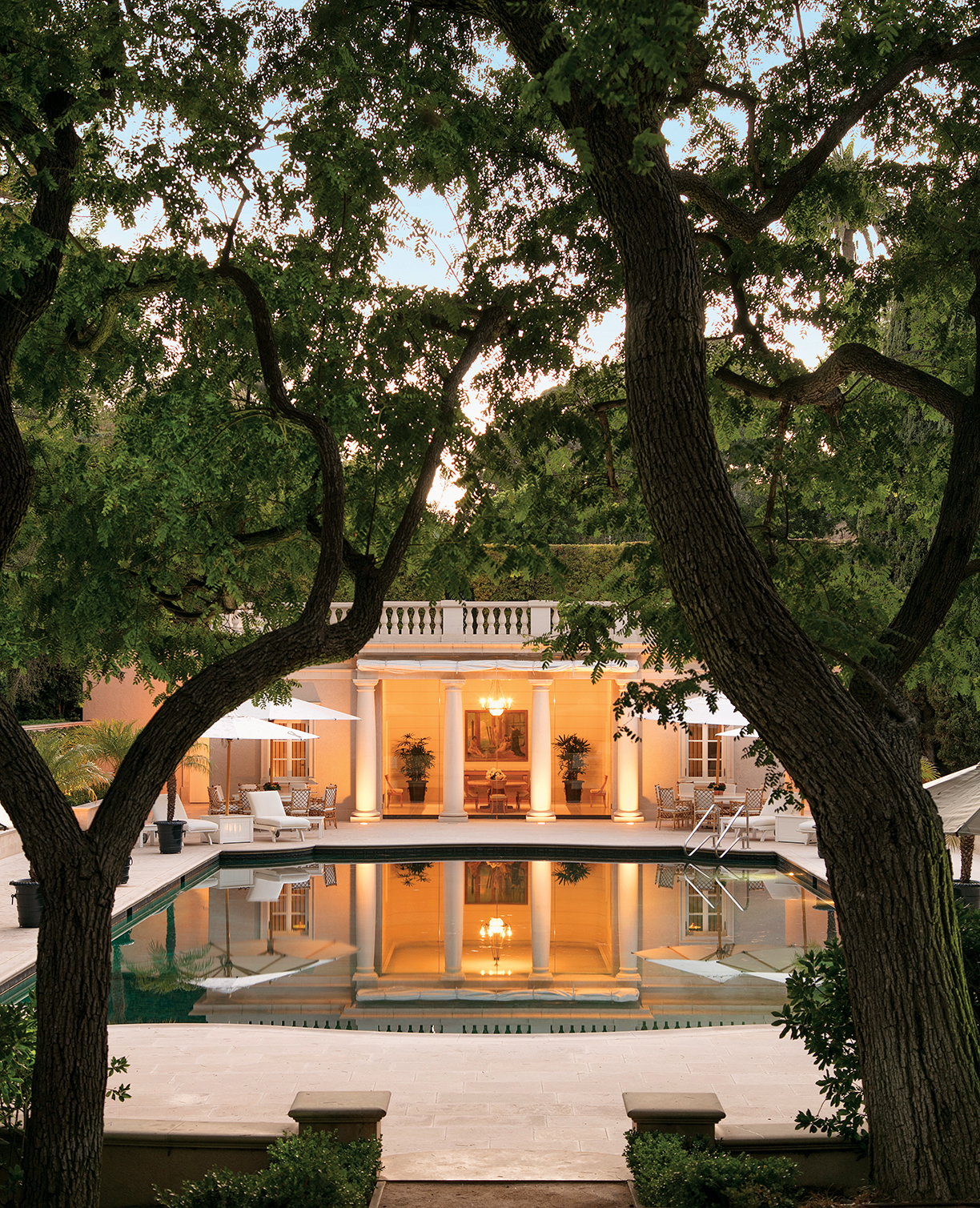
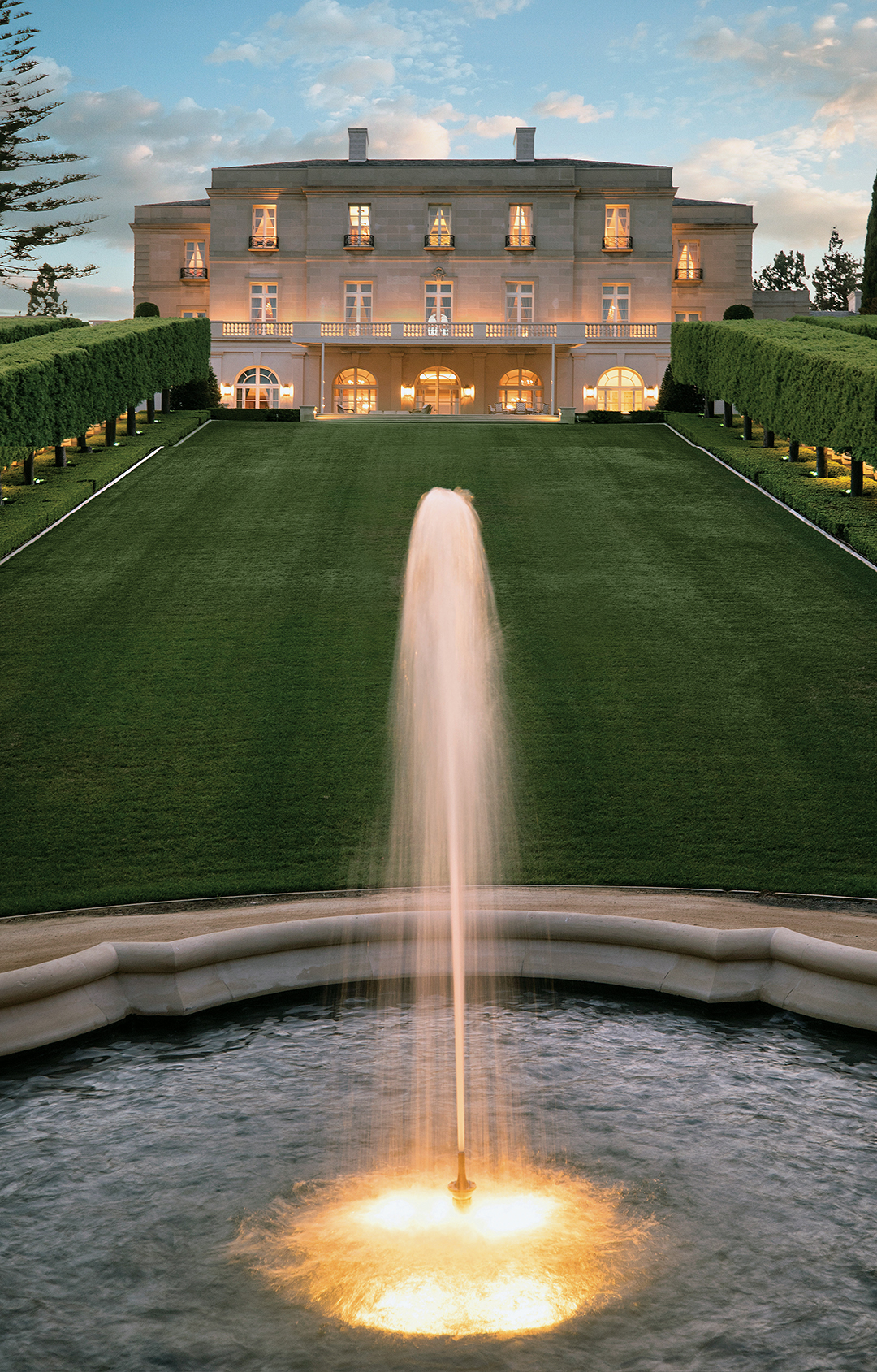
Legendary Redos
No matter how exquisite a property, new owners have a penchant to put their own stamp on it. “I just think that it’s amusing that people must make even, you know, the most expensive, beautiful home — they must make it their own. So sometimes it’s just been remodeled, and then torn completely apart. And they start over,” shares Mills, who brokered the 2019 sale of The Manor. And this practice is not limited to prime estates. Instead, it reaches across the entire price spectrum, whether a house is $1 million or a $100 million.
Few other homes on our annual list have received as much attention as this estate. “The Manor was sort of like no other,” recalls Mills. With 123 rooms and more square footage than the White House, it is one of the largest in Los Angeles. Size and prices generated publicity, but it was the extensive amenities, including gift-wrapping rooms, vast closets, a barber shop, hair salon, bowling alley and nightclub that captured the public’s fancy. There aren’t as many closets as large as the one in the master,” Mills ventures, estimating it to be in the 2,500-square-foot range.”
This story originally appeared in Unique Homes Ultimate ’21. Click here to see the digital version.
Featured image: ©istockphoto.com / Chinnapong
It’s time to discover these 10 extraordinarily refined places, each with distinctly different waterfront experiences.
THIS ARTICLE ORIGINALLY APPEARED IN THE UH Summer ’21 ISSUE OF UNIQUE HOMES. TO SEE THE DIGITAL VERSION OF THIS STORY, CLICK HERE.
Culdesac will be the first neighborhood-scale community with zero residential parking, which will allow for more open spaces that can be used for socializing, events, and getting to know your neighbors.
Rendering by Opticos Design.
A five-minute city, car-free and golf cart centered communities are gaining momentum around the United States, from Port Aransas, Texas, to Tempe, Arizona.
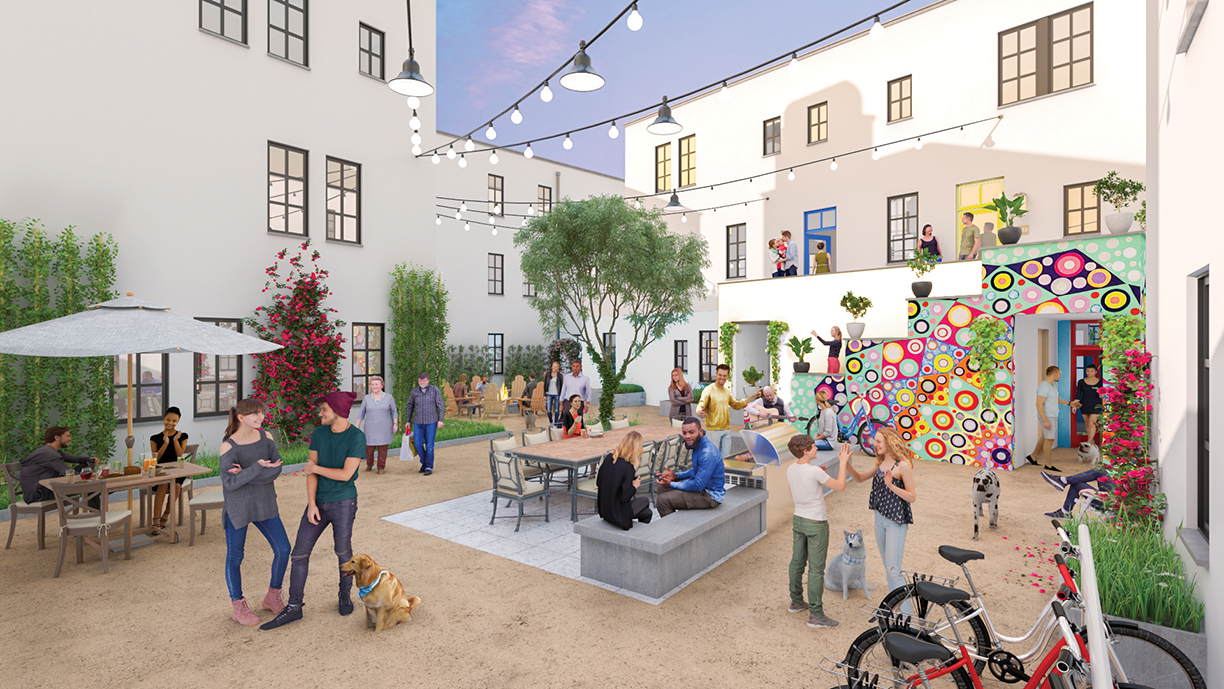
With plenty of extra outdoor space, Culdesac will hold over 150 events per year, including concerts, food trucks on the plaza, outdoor yoga classes, and more that guests can enjoy close to home.
Rendering by Opticos Design.
Automobiles have long been a symbol of freedom and advancement, making it easy to overlook the strain they put on our communities and the environment. Even smaller cities are battling noise and air pollution as the number of cars per household increases. Long commutes, congested traffic routes, parking fees, and pollution have all encouraged a whole new way of thinking when it comes to cars.
Culdesac, in Tempe, Arizona is the first car-free community in the United States that has been built from top to bottom around the idea that cities can be made better. “The vision has always remained the same — to build cities for people and not cars,” says Culdesac’s general manager, Lavanya Sunder. Space that is typically reserved for roads, parking lots, and individual parking has been completely rethought in this rental apartment community. Parking lots and garages have been replaced with wide-open spaces that offer everything from fire pits and hammocks to water features and inviting courtyards.
Tempe, Arizona, offered the ideal canvas for a project like Culdesac. “We chose Tempe for its thriving job market, proximity to transportation, and forward-thinking, action-oriented local government,” says Sunder. These are among the added benefits when considering a car-free community.
“By removing parking lots, we were able to see all of the possibilities, twice the retail, triple the open space, and 55-percent landscape coverage, compared to less than 20 percent from comparable developments,” notes Sunder.
The community was designed as a five-minute city, meaning everything residents might need is within reach and life is at your front door. “Homes at Culdesac all open up to vibrant shared courtyards, versus impersonal hallways in traditional apartment complexes,” says Sunder. Seemingly small details such as this contribute to the overall atmosphere that is created when a place urges its residents to slow down. “Community is a key component of Culdesac. Culdesac will have over 150 events per year, including concerts, food trucks on the plaza, outdoor yoga classes, and more.”
Communities such as Culdesac are finding that residents are drawn to the idea of knowing their neighbors again. A notion that hasn’t been overlooked in other communities around the United States. Port Aransas, Texas, is a beautiful beach destination that is like traveling back in time. The eclectic atmosphere is entirely accessible by golf carts, including the 18 miles of beach, with spacious boardwalks that accommodate the carts and encourage foot traffic. The use of golf carts decreases traffic, noise and pollution, and creates a very relaxed pace around the island. Cinnamon Shore, the 1,000-acre, master-planned beachfront community is very walkable and designed with families in mind who want to enjoy the small-town feel in Port Aransas.
A private luxury community, Haig Point, on the northern end of Daufuskie Island in South Carolina is only accessible by ferry, and the island is almost entirely car-free. Residents and guests never have to worry about traffic, stopping for gas, or finding a parking space, as the island runs mainly on golf carts. Similarly, Fire Island, across the Great South Bay from Long Island, New York, is another popular summer retreat that functions smoothly without cars. Bikes, golf carts, and jet skis are the best way to experience the Fire Island’s top-tier accommodations.
According to the Bureau of Transportation Statistics, “the mean number of vehicles in households is 1.9 personal vehicles…. Thus, it appears that households on average have more vehicles than drivers.” American cities, from New York to San Francisco, are struggling to provide enough space to merely park all of these vehicles, nevermind drive them.
Our personal space, green space, shared space, and even sidewalks have decreased significantly over the years as the need to accommodate a growing number of automobiles increases.
Communities such as Culdesac are hoping it is time for the urban form to be rethought and upgraded. “We also will have an “Extend Your Home On-Demand” Program,” says Sunder.

Communities such as Cinnamon Shore in Port Aransas, Texas, are embracing the idea that guests want a slower pace without sacrificing accessibility.
©istockphoto.com / IR_Stone

Car-free and golf cart centered communities are designed for those looking to reconnect with the outdoors and spend less time stuck in traffic.
©istockphoto.com / 300dpi
“Residents will have access to a variety of bookable spaces to allow them to expand and contract their home as needed.” A modern way of living has melded with the traditional idea of small-town communities. “Culdesac will have bookable guest suites, podcast studios, hosting spaces, and day-use office spaces to allow your home to adjust to your needs,” Sunder explains. “Why pay for a guest room 365 days a year, when you only use it a few times a month?”
Forever shifting to accommodate the residents’ needs, a car-free community like Culdesac is ideal for many people, even during these changing times amidst a pandemic. “The idea of life at your front door makes Culdesac Tempe a place that a variety of people with different needs are interested in — young professionals, students, families, remote workers, retirees, empty nesters, et cetera,” says Sunder. More spacious apartments and public workspace are functional for those residents who are working remotely, as they also don’t have to worry about commuting into an office every day. Since the pandemic, “we’ve seen increased interest from folks particularly from New York and San Francisco, and 50 percent of our waitlist are people coming from outside Arizona,” notes Sunder.
In today’s unusual market, buyers and sellers benefit from luxury agents with international connections.
When Eugenia Foxworth tells you about the FIABCI network, one thing is immediately clear: it works.
FIABCI-USA is the U.S. chapter of the International Real Estate Federation, formed in France in 1951 (the acronym stands for Fédération Internationale des Administrateurs de Biens Conseils et Agents Immobiliers). To say that it’s been a key part of Foxworth’s business from the beginning would be an understatement.
Soon after obtaining her license in New York City in 2000, Foxworth started attending FIABCI events in the region. “As a matter of fact, one of the people responsible for my joining FIABCI was Christina Lodar, who was my Unique Homes sales associate. She asked me what did I want to accomplish in real estate? I told her that I wanted to grow my business. She told me about FIABCI and the opportunities that they offered. At that time, you needed to be sponsored. She was a FIABCI member also, and she sponsored me.”
The connections proved to be the business building blocks Foxworth needed.
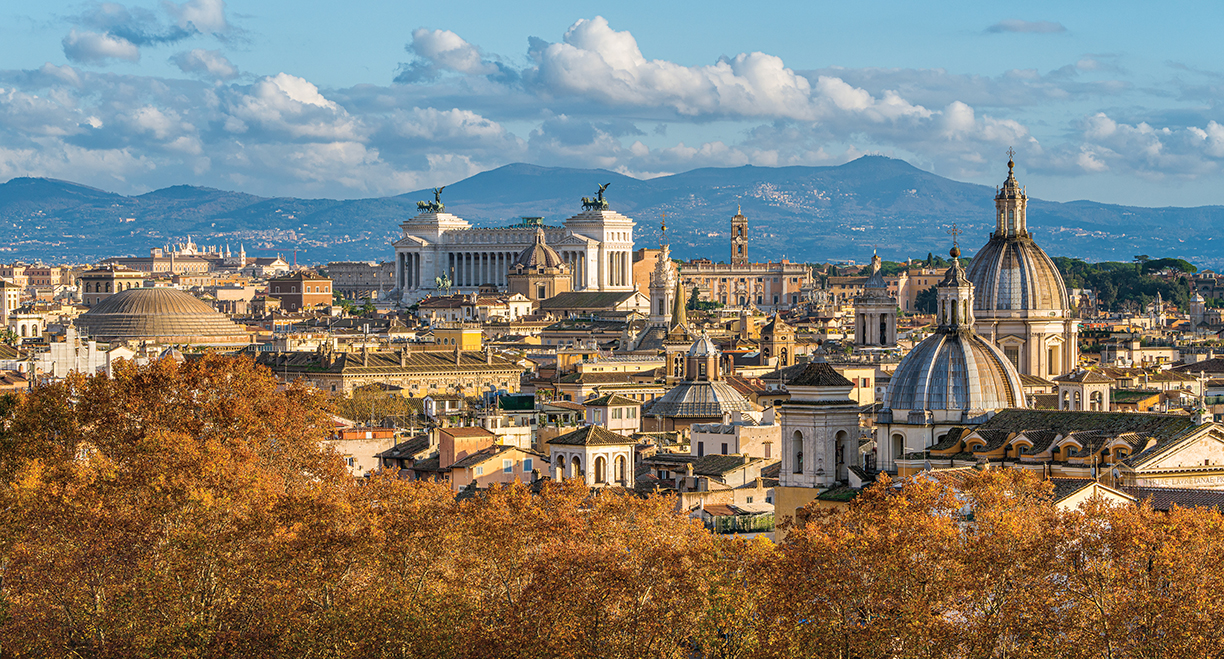
Above photo: Rome – istockphoto.com / e55evu
Cover photo: London – istockphoto.com / sborisov
“FIABCI is an organization that works. As a new agent, I was amazed at all of the tools and advantages that they offered. The referral network, our sponsors, academics, our own listings on the FIABCI-USA and FIABCI-ORG website, publications with websites just geared to the luxury properties, et cetera — it was amazing. We referred clients and friends to each other. A lot of my business came from FIABCI members my first few years.”
Foxworth, who is the FIABCI-USA president-elect, isn’t the only one extolling FIABCI’s virtues. Christian Ross of Engel & Völkers Atlanta is the president of the FIABCI Southeast Council. She explains how the network has given her greater insights into markets all over the world, how she’s gained knowledge for marketing campaigns and global developments, and connected clients to potential investments.
“For sellers, marketing to the international buyer and curating a marketing plan that targets and attracts a buyer from across the globe is essential. With that is also the knowledge of how to maximize currency exchanges, understanding the challenges of moving funds from certain countries and the geopolitical news that may affect all of those concerns,” Ross says. “For buyers, discovering and understanding how to connect them with opportunities they are exploring for international investments, as well as consulting with them to understand all aspects of their competition in the marketplace, helps them put their best foot forward.”
Hugh Gilliam, the director of International Real Estate at RealtyHive in Atlanta, is the current FIABCI-USA president. In almost 10 years, he’s gained dozens of listings through the network. When asked where he sees FIABCI going, he says the potential is unlimited.
“Our community comprises over 40 professions, including architects, brokers, developers, investors, financial institutions, and the list goes on,” Gilliam says. “In addition to expanding membership within these professions, we are adding new countries to the organization annually. This makes it very clear that the sky is the limit over the next decade.”
And Foxworth describes how even the pandemic has not impacted FIABCI’s effectiveness. “We have had many challenges throughout and we overcame the challenges,” she says. “Even at this time with COVID-19, we are continuing to do business globally. The Internet has allowed our members to work together very efficiently. The Zoom seminars and presentations are taking us to another level of selling luxury real estate, and we have several success stories.”
THIS ARTICLE ORIGINALLY APPEARED IN THE Fall 2020 ISSUE OF UNIQUE HOMES. TO SEE THE DIGITAL VERSION OF THIS STORY, CLICK HERE.
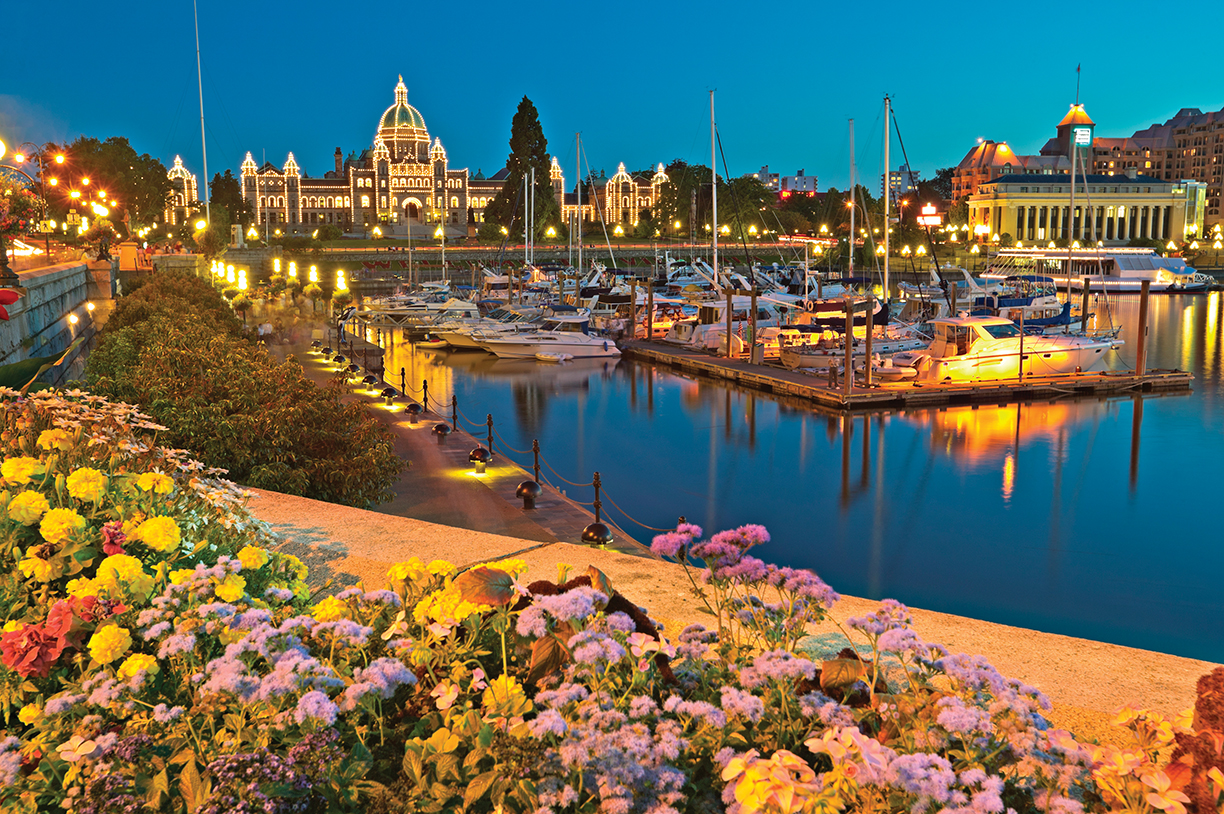
Victoria, British Columbia’s Capital City, is located on the beautiful Vancouver Island in Canada. From the minute your plane touches down, your lungs will expand and relish healthy, fresh, ocean-circulated air.
Here you can enjoy boating, beaches, world-class shopping and a super natural environment.
Looking to settle down in Victoria?
Check out this Unique listing!
Victoria boasts a spectacular setting of ocean and mountain vistas and offers numerous economic, cultural and recreational opportunities.
Victoria has the mildest climate in Canada and with greenery in evidence throughout the year there is little wonder that it’s called the City of Gardens!
The Inner Harbour is the heart of Victoria and for many boaters is the gateway to the City of Gardens. Bordering the harbour are the ivy-covered Fairmont Empress hotel, the world-renowned Royal British Columbia Museum and the magnificent BC Parliament Buildings.
UPLANDS ESTATES in Oak Bay | Victoria, British Columbia
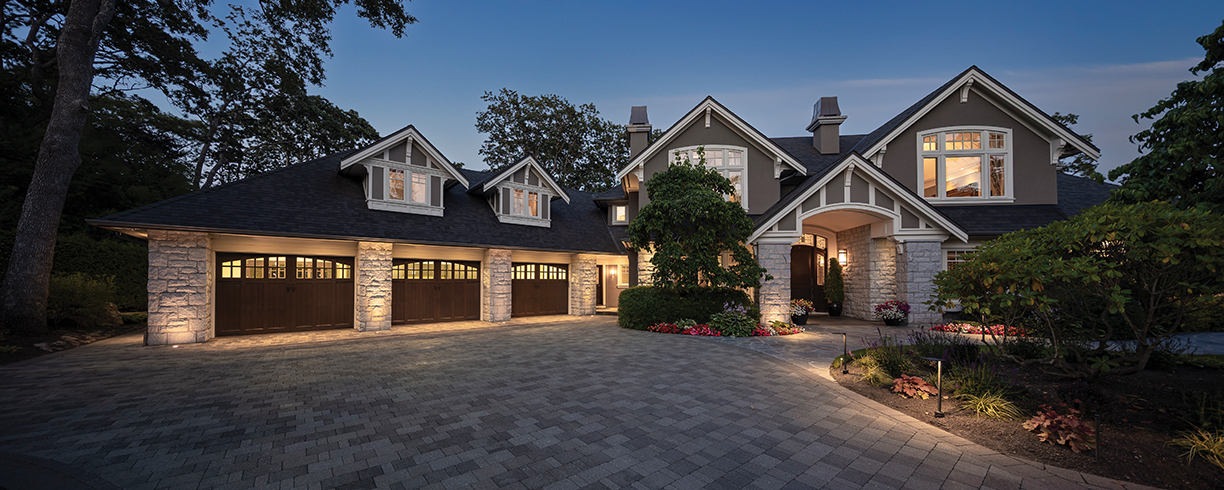
Privately nestled at the end of a quiet cul-de-sac, away from all drive-through traffic, this rare artisan creation awaits. 9,878 square feet of interior luxury living. 1,745 square feet of exquisite patio entertaining areas including a full outdoor kitchen and gas fire pit. All with .71 acres of surrounding, ever-changing flowering gardens and trees highlighted by a meandering river and waterfalls. This is the first time this property has been offered for sale since completion in 2012. Visit the website for Floor Plans, Video, 3D Renderings & 100+ Photos. $6,995,000
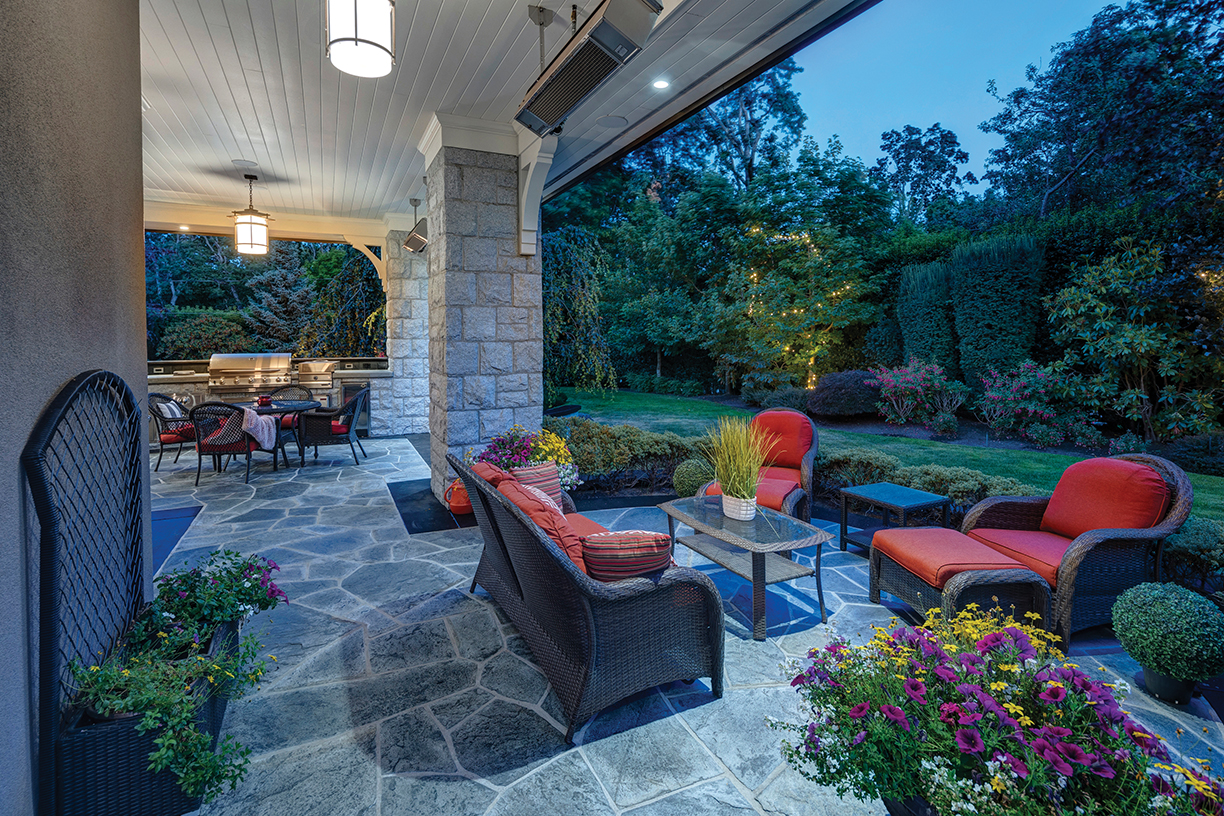
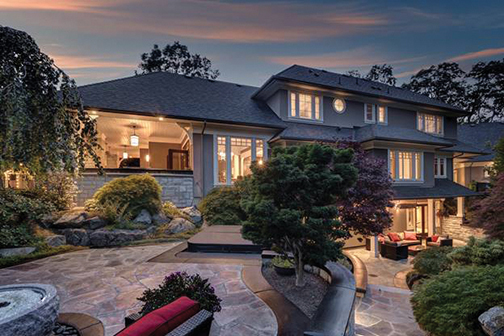
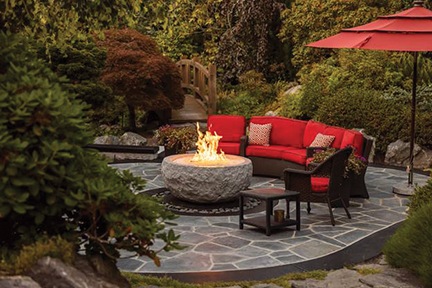
Listing provided by Cathy Duncan.
Cathy & Associates Ltd. | cathy@cathyduncan.com | 250.888.9343

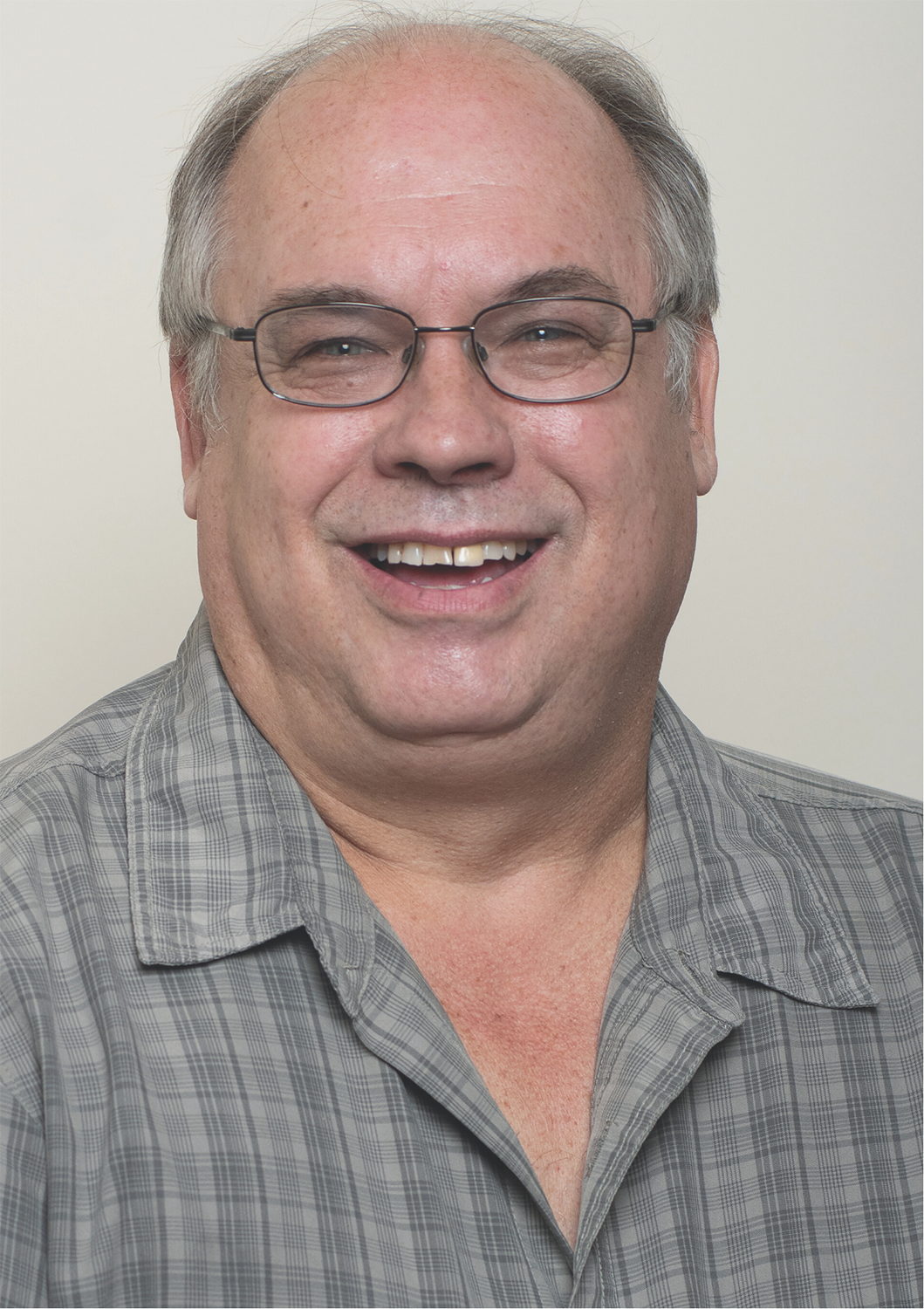
W. Terry Potts
Country Club Properties
183 West Main Street, Highlands, NC 28741 | 828.526.2520 | Fax: 828.526.2470
ccp4terry@gmail.com | www.ccphighlandsnc.com
Country Club Properties is a fully independent real estate brokerage firm serving the country club market in the Highlands-Cashiers area. Completely independent from any developers, speculators or sales programs, Country Club Properties offers an untethered relationship. Area country clubs include Highlands, Wildcat Cliffs, Old Edwards Club, Mountaintop Club, Trillium Links Club, Cullasaja Club and Highlands Falls. Whether your interest is buying or selling real estate in the Highlands area, give Country Club Properties a call.
Featured Property: High Farm, NC
This highly unique property consists of over 90 acres of rolling land, flanked partially on one side by USFS land. The property has about 27 acres of open pasture with the additional acreage being wooded with streams and flanks the Chatooga River on a stretch of whitewater, waterfalls and swimming holes. $4,500,000 MLS #91498
W. Terry Potts originally appeared as an Elite agent in Unique Homes Spring ’21: Elite edition. See the ad here.

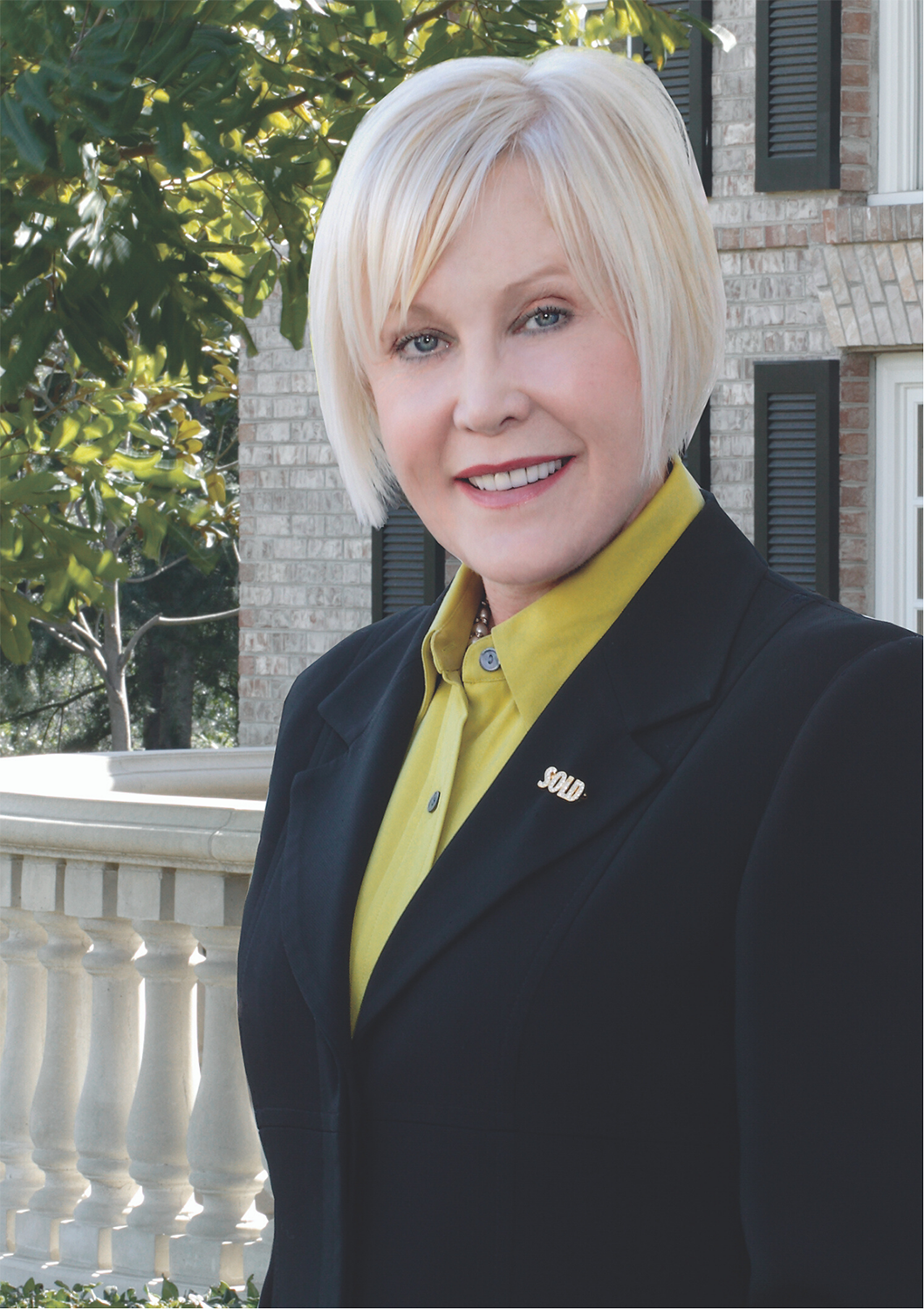
Mariann Cordova
Berkshire Hathaway HomeServices California Properties
111 Corporate Dr., Suite. 210, Ladera Ranch, CA 92694
Phone: 949-307-4040 | mc@southorangecountyliving.com | www.marianncordova.agent.bhhscalifornia.com
Mariann is a multi-award-winning Realtor and marketing expert with Berkshire Hathaway HomeServices California Properties. Her goal always has been successful marketing of residential properties, employing professional ethics, sound planning, persuasive skills and a strong support system. With a Bachelor of Arts from the University of California and a certificate of interior design from the Los Angeles Design Center, Mariann carries years of in-depth real estate and current market knowledge. Her fluency in English and Swedish and working knowledge of Norwegian, Danish and German are valuable assets in assisting international clients and those looking to relocate.
Featured Property: 23111 Maravilla Lane, Coto de Caza
Stunning Georgian Equestrian Estate on 3.7 Acres
Video: https://vimeo.com/273382691 | www.23111Maravilla.com
Brochure: https://issuu.com/marianncordova/docs/23111_maravilla
$12,900,000


